All You Need To Know About The Istanbul Marathon
 ظ…ط§ط±ط§طھظ† ط§ط³طھط§ظ†ط¨ظˆظ„ غŒع©غŒ ط§ط² ظ…طط¨ظˆط¨â€Œطھط±غŒظ† ظˆ ظ¾ط±ط·ط±ظپط¯ط§ط±طھط±غŒظ† ظ…ط³ط§ط¨ظ‚ط§طھ ط¯ظˆ ط¬ط§ط¯ظ‡â€Œط§غŒ ط¯ط± ط¬ظ‡ط§ظ† ط§ط³طھ. ظ…ط§ظ‡ ظ†ظˆط§ظ…ط¨ط± (ظ¾غŒط´â€Œطھط± ط§ع©طھط¨ط±) ظ‡ط± ط³ط§ظ„طŒ ظ‡ط²ط§ط±ط§ظ† ط¯ظˆظ†ط¯ظ‡ ط§ط² ط³ط±ط§ط³ط± ط¬ظ‡ط§ظ† ط¨ظ‡ ط§ط³طھط§ظ†ط¨ظˆظ„ ط³ظپط± ظ…غŒâ€Œع©ظ†ظ†ط¯ طھط§ ط¯ط± ط§غŒظ† ظ…ط³ط§ط¨ظ‚ظ‡ ط´ط±ع©طھ ع©ظ†ظ†ط¯.
ظ…ط§ط±ط§طھظ† ط§ط³طھط§ظ†ط¨ظˆظ„ غŒع©غŒ ط§ط² ظ…طط¨ظˆط¨â€Œطھط±غŒظ† ظˆ ظ¾ط±ط·ط±ظپط¯ط§ط±طھط±غŒظ† ظ…ط³ط§ط¨ظ‚ط§طھ ط¯ظˆ ط¬ط§ط¯ظ‡â€Œط§غŒ ط¯ط± ط¬ظ‡ط§ظ† ط§ط³طھ. ظ…ط§ظ‡ ظ†ظˆط§ظ…ط¨ط± (ظ¾غŒط´â€Œطھط± ط§ع©طھط¨ط±) ظ‡ط± ط³ط§ظ„طŒ ظ‡ط²ط§ط±ط§ظ† ط¯ظˆظ†ط¯ظ‡ ط§ط² ط³ط±ط§ط³ط± ط¬ظ‡ط§ظ† ط¨ظ‡ ط§ط³طھط§ظ†ط¨ظˆظ„ ط³ظپط± ظ…غŒâ€Œع©ظ†ظ†ط¯ طھط§ ط¯ط± ط§غŒظ† ظ…ط³ط§ط¨ظ‚ظ‡ ط´ط±ع©طھ ع©ظ†ظ†ط¯.
ط§ظˆظ„غŒظ† ظ…ط§ط±ط§طھظ† ط§ط³طھط§ظ†ط¨ظˆظ„ ط¯ط± ط³ط§ظ„ غ±غ¹غ·غ¹ ط¨ط±ع¯ط²ط§ط± ط´ط¯. ط§ط² ط¢ظ† ط²ظ…ط§ظ† طھط§ ط¨ظ‡ ط§ظ…ط±ظˆط²طŒ ظ…طط¨ظˆط¨غŒطھ ط§غŒظ† ظ…ط³ط§ط¨ظ‚ظ‡ ظˆ ظ…غŒط²ط§ظ† ظ…ط´ط§ط±ع©طھ ط¯ط± ط¢ظ† ط¨ظ‡ ط³ط±ط¹طھ ط±ط´ط¯ ع©ط±ط¯ظ‡ ط§ط³طھ. ط¨ظ†ط§ط¨ط±ط§غŒظ† ط¨ظ‡طھط± ط§ط³طھ ظ‡ط±ع†ظ‡ ط²ظˆط¯طھط± ط¨ط±ط§غŒ ط«ط¨طھ ظ†ط§ظ… ط¢ظ† ط§ظ‚ط¯ط§ظ… ع©ظ†غŒط¯.
 غ±. ظ…ط§ط±ط§طھظ† ط§ط³طھط§ظ†ط¨ظˆظ„ ع†ظ‡ ط²ظ…ط§ظ†غŒ ط¨ط±ع¯ط²ط§ط± ظ…غŒâ€Œط´ظˆط¯طں
غ±. ظ…ط§ط±ط§طھظ† ط§ط³طھط§ظ†ط¨ظˆظ„ ع†ظ‡ ط²ظ…ط§ظ†غŒ ط¨ط±ع¯ط²ط§ط± ظ…غŒâ€Œط´ظˆط¯طں
ظ…ط§ط±ط§طھظ† ط§ط³طھط§ظ†ط¨ظˆظ„ ظ†ظˆط§ظ…ط¨ط± (ط¢ط¨ط§ظ†) ظ‡ط± ط³ط§ظ„ ط¨ط±ع¯ط²ط§ط± ظ…غŒâ€Œط´ظˆط¯. طھط§ط±غŒط® ط¯ظ‚غŒظ‚ ظ…ط³ط§ط¨ظ‚ظ‡ ظ…طھظپط§ظˆطھ ط§ط³طھطŒ ط§ظ…ط§ ظ…ط¹ظ…ظˆظ„ط§ ط¯ط± ط¢ط®ط±غŒظ† غŒع©ط´ظ†ط¨ظ‡ غŒط§ ط§ظˆظ„غŒظ† ط´ظ†ط¨ظ‡ ظ…ط§ظ‡ ظ†ظˆط§ظ…ط¨ط± ط¨ط±ع¯ط²ط§ط± ظ…غŒâ€Œط´ظˆط¯.
ط§ظ…ط³ط§ظ„طŒ طھط§ط±غŒط® ط¨ط±ع¯ط²ط§ط±غŒطŒ ظ¾ظ†ط¬ظ… ظ†ظˆط§ظ…ط¨ط± ط®ظˆط§ظ‡ط¯ ط¨ظˆط¯!
 غ². ظ…ط³ط§ط¨ظ‚ظ‡ ع©ط¬ط§ ط¨ط±ع¯ط²ط§ط± ظ…غŒâ€Œط´ظˆط¯طں
غ². ظ…ط³ط§ط¨ظ‚ظ‡ ع©ط¬ط§ ط¨ط±ع¯ط²ط§ط± ظ…غŒâ€Œط´ظˆط¯طں
ظ…ط³ط§ط¨ظ‚ظ‡ ط¯ط± ظ‚ظ„ط¨ ط§ط³طھط§ظ†ط¨ظˆظ„ ط´ط±ظˆط¹ ط´ط¯ظ‡ ظˆ ظ¾ط§غŒط§ظ† ظ…غŒâ€ŒغŒط§ط¨ط¯. ظ…ط³غŒط± ط¯ظˆظ†ط¯ع¯ط§ظ† ط§ط² ظ…ط³ط¬ط¯ ظ…ط¹ط±ظˆظپ ط³ظ„ط·ط§ظ† ط§طظ…ط¯ ط¯ط± ط³ظ…طھ ط§ط±ظˆظ¾ط§غŒغŒ ط´ظ‡ط± ط´ط±ظˆط¹ ط´ط¯ظ‡طŒ ط§ط² ظ…غŒط§ظ†ظ‡ ط§ط³طھط§ظ…ط¨ظˆظ„ ظ‚ط¯غŒظ… ظˆ ط¯ط± ط§ظ…طھط¯ط§ط¯ ط³ظˆط§طظ„ ط¨ظˆط³ظپظˆط±ظˆط³ ظ…غŒâ€Œع¯ط°ط±ط¯ – ط¨ط¯ظˆظ† ط¹ط¨ظˆط± ع©ط±ط¯ظ† ط§ط² ظ¾ظ„ ط¨ظˆط³ظپظˆط±ظˆط³.
ظ…ط³غŒط± ط¯ظ‚غŒظ‚ ط¯ظˆ 15 ع©غŒظ„ظˆظ…طھط±غŒ ط¹ظ…ظˆظ…غŒ ط¯ط± ط·ظˆظ„ ط³ط§ظ„غŒط§ظ† ع©ظ…غŒ طھط؛غŒغŒط± ع©ط±ط¯ظ‡ ط§ط³طھ.
 غ³. ع†ظ†ط¯ ظ†ظپط± ط¯ط± ظ…ط³ط§ط¨ظ‚ظ‡ ط´ط±ع©طھ ظ…غŒâ€Œع©ظ†ظ†ط¯طں
غ³. ع†ظ†ط¯ ظ†ظپط± ط¯ط± ظ…ط³ط§ط¨ظ‚ظ‡ ط´ط±ع©طھ ظ…غŒâ€Œع©ظ†ظ†ط¯طں
طھط¹ط¯ط§ط¯ ط´ط±ع©طھ‌ع©ظ†ظ†ط¯ع¯ط§ظ† ط¯ط± ط§غŒظ† ظ…ط³ط§ط¨ظ‚ظ‡ ظ‡ط± ط³ط§ظ„ ظ…طھظپط§ظˆطھ ط§ط³طھطŒ ط§ظ…ط§ ط¨ط§ طھظˆط¬ظ‡ ط¨ظ‡ ط¹ظ…ظˆظ…غŒ ط¨ظˆط¯ظ† ط¢ظ†طŒ ط§غŒظ† طھط¹ط¯ط§ط¯ ظ‡ظ…غŒط´ظ‡ ط¨ظ‡ ط¯ظ‡â€Œظ‡ط§ ظ‡ط²ط§ط± ظ†ظپط± ظ…غŒâ€Œط±ط³ط¯.
طھط¹ط¯ط§ط¯ ط¯ظ‚غŒظ‚ ط´ط±ع©طھ‌ع©ظ†ظ†ط¯ع¯ط§ظ† ط¨ظ‡ طھط§ط±غŒط® ط¨ط±ع¯ط²ط§ط±غŒ ظˆ ظ…غŒط²ط§ظ† ط¸ط±ظپغŒطھ‌ظ‡ط§غŒ ظ…ظˆط¬ظˆط¯ ط¨ط³طھع¯غŒ ط¯ط§ط±ط¯طŒ ط§ظ…ط§ ط¨ط§ طھظˆط¬ظ‡ ط¨ظ‡ ط§ظ‡ظ…غŒطھ ط±ظˆغŒط¯ط§ط¯ ظ…ط§ط±ط§طھظ† ط§ظˆط±ط§ط³غŒط§ ط§ط³طھط§ظ†ط¨ظˆظ„ ط¨ط±ط§غŒ ظˆط±ط²ط´ع©ط§ط±ط§ظ† ط¬ظ‡ط§ظ†طŒ ظ…غŒط²ط§ظ† ظ…ط´ط§ط±ع©طھ ط¨ط§ظ„ط§ ط§ط³طھ.
 غ´. ط¬ظˆ ظ…ط³ط§ط¨ظ‚ظ‡ ع†ع¯ظˆظ†ظ‡ ط§ط³طھطں
غ´. ط¬ظˆ ظ…ط³ط§ط¨ظ‚ظ‡ ع†ع¯ظˆظ†ظ‡ ط§ط³طھطں
ط¨ظ‡ ط¹ظ†ظˆط§ظ† غŒع©غŒ ط§ط² ط¨ط²ط±ع¯طھط±غŒظ† ظ…ط³ط§ط¨ظ‚ط§طھ ط¬ط§ط¯ظ‡â€Œط§غŒ ط¬ظ‡ط§ظ†طŒ ط¬ظˆ ظ…ط³ط§ط¨ظ‚ظ‡ ط¨ط³غŒط§ط± ظ‡غŒط¬ط§ظ†â€Œط§ظ†ع¯غŒط² ظˆ ظ¾ط±ط´ظˆط± ط§ط³طھ. ظ…ط³ط§ط¨ظ‚ظ‡ ط¯ط± ظ‚ظ„ط¨ ط´ظ‡ط± ط´ط±ظˆط¹ ط´ط¯ظ‡ ظˆ ظ¾ط§غŒط§ظ† ظ…غŒâ€ŒغŒط§ط¨ط¯طŒ ظˆ ط´ظ…ط§ ط§ط² ط§ط¨طھط¯ط§ طھط§ ط§ظ†طھظ‡ط§ ط§غŒظ† ظ‡غŒط¬ط§ظ† ط±ط§ ط§طط³ط§ط³ ط®ظˆط§ظ‡غŒط¯ ع©ط±ط¯.
 ط±ظˆغŒط¯ط§ط¯غŒ ط¨ط³غŒط§ط± ط¯ظˆط³طھط§ظ†ظ‡طŒ ع¯ط±ظ… ظˆ طµظ…غŒظ…غŒطŒ ط¯ط±ط³طھ ظ…ط·ط§ط¨ظ‚ ط§ظ†طھط¸ط§ط±غŒ ع©ظ‡ ط§ط² غŒع© ظ…طغŒط· طھط±ع© ظ…غŒâ€Œط±ظˆط¯. ط¯ظˆط³طھط§ظ†غŒ ع©ظ‡ ع¯ط±ظˆظ‡غŒ ط¨ط§ ظ‡ظ… ط¯ط± ظ…ط³غŒط± ظ…ط³ط§ط¨ظ‚ظ‡ ظ…غŒâ€Œط¯ظˆظ†ط¯طŒ ط§ظپط±ط§ط¯غŒ ع©ظ‡ ط¨ط±ط§غŒ ط§ظ…ظˆط± ط®غŒط±غŒظ‡ ظ…ط³ط§ط¨ظ‚ظ‡ ظ…غŒâ€Œط¯ظ‡ظ†ط¯ ظˆ ط®ط§ظ†ظˆط§ط¯ظ‡â€Œظ‡ط§غŒغŒ ع©ظ‡ ظ‡ظ…ظ‡ ط¨ط§ ظ‡ظ… ط¯ط± ظ…ط³ط§ط¨ظ‚ظ‡ ط´ط±ع©طھ ع©ط±ط¯ظ‡â€Œط§ظ†ط¯.
ط±ظˆغŒط¯ط§ط¯غŒ ط¨ط³غŒط§ط± ط¯ظˆط³طھط§ظ†ظ‡طŒ ع¯ط±ظ… ظˆ طµظ…غŒظ…غŒطŒ ط¯ط±ط³طھ ظ…ط·ط§ط¨ظ‚ ط§ظ†طھط¸ط§ط±غŒ ع©ظ‡ ط§ط² غŒع© ظ…طغŒط· طھط±ع© ظ…غŒâ€Œط±ظˆط¯. ط¯ظˆط³طھط§ظ†غŒ ع©ظ‡ ع¯ط±ظˆظ‡غŒ ط¨ط§ ظ‡ظ… ط¯ط± ظ…ط³غŒط± ظ…ط³ط§ط¨ظ‚ظ‡ ظ…غŒâ€Œط¯ظˆظ†ط¯طŒ ط§ظپط±ط§ط¯غŒ ع©ظ‡ ط¨ط±ط§غŒ ط§ظ…ظˆط± ط®غŒط±غŒظ‡ ظ…ط³ط§ط¨ظ‚ظ‡ ظ…غŒâ€Œط¯ظ‡ظ†ط¯ ظˆ ط®ط§ظ†ظˆط§ط¯ظ‡â€Œظ‡ط§غŒغŒ ع©ظ‡ ظ‡ظ…ظ‡ ط¨ط§ ظ‡ظ… ط¯ط± ظ…ط³ط§ط¨ظ‚ظ‡ ط´ط±ع©طھ ع©ط±ط¯ظ‡â€Œط§ظ†ط¯.
ط¬ط¯ط§ ط§ط² ط«ط¨طھ ط±ع©ظˆط±ط¯ ط¯ط± ظ…ط³غŒط± ظ†غŒظ…ظ‡ ظ…ط§ط±ط§طھظ†طŒ ط¨غŒظ† ط¯ظˆظ†ط¯ع¯ط§ظ† غŒع© طµظ…غŒظ…غŒطھ ظˆط§ظ‚ط¹غŒ ظˆط¬ظˆط¯ ط¯ط§ط±ط¯. ط¨ظ‡ ط¹ظ†ظˆط§ظ† طھظ†ظ‡ط§ ظ…ط§ط±ط§طھظ† ط¨غŒظ† ظ‚ط§ط±ظ‡â€Œط§غŒطŒ ط§غŒظ† ط±ظˆغŒط¯ط§ط¯ غŒع©غŒ ط¯غŒع¯ط± ط§ط² ط±ظˆغŒط¯ط§ط¯ظ‡ط§غŒغŒ ط§ط³طھ ع©ظ‡ ط¯ظˆظ†ط¯ع¯ط§ظ† ط±ط§ ط§ط² ط³ط±ط§ط³ط± ط¬ظ‡ط§ظ† ط¨ظ‡ ط®ظˆط¯ ط¬ط°ط¨ ظ…غŒâ€Œع©ظ†ط¯. غŒع© ط±ظˆغŒط¯ط§ط¯ ط¨غŒظ†â€Œط§ظ„ظ…ظ„ظ„غŒ ظˆط§ظ‚ط¹غŒ!
غµ. ع†ط±ط§ ط¨ط§غŒط¯ ط¯ط± ظ…ط§ط±ط§طھظ† ط§ط³طھط§ظ†ط¨ظˆظ„ ط´ط±ع©طھ ع©ظ†غŒظ…طں
ط¯ظ„ط§غŒظ„ ط²غŒط§ط¯غŒ ط¨ط±ط§غŒ ط´ط±ع©طھ ط¯ط± ظ…ط§ط±ط§طھظ† ط§ط³طھط§ظ†ط¨ظˆظ„ ظˆط¬ظˆط¯ ط¯ط§ط±ط¯. ط§غŒظ† ظ…ط³ط§ط¨ظ‚ظ‡ طھظ†ظ‡ط§ ظ…ط§ط±ط§طھظ† ط¨غŒظ† ظ‚ط§ط±ظ‡â€Œط§غŒ ط§ط³طھ ظˆ ظپط±طµطھغŒ ط¹ط§ظ„غŒ ط¨ط±ط§غŒ ط¯ط§ط´طھظ† طھط¬ط±ط¨ظ‡â€Œط§غŒ ط¬ط¯غŒط¯! ظ‡ظ…ع†ظ†غŒظ† ظپط±طµطھغŒ ط§ط³طھ ط¨ط±ط§غŒ ط§غŒظ†ع©ظ‡ طھظˆط§ظ†ط§غŒغŒâ€Œظ‡ط§غŒطھط§ظ† ط±ط§ ط¨ظ‡ ع†ط§ظ„ط´ ع©ط´غŒط¯ظ‡ ظˆ ط®ظˆط¯ ط±ط§ ط¯ط± ظ…ظ‚ط§غŒط³ظ‡ ط¨ط§ ط¯غŒع¯ط± ط¯ظˆظ†ط¯ع¯ط§ظ† ظ…ط§ط±ط§طھظ† ط¨ط³ظ†ط¬غŒط¯.

ط¹ظ„ط§ظˆظ‡ ط¨ط± ط¢ظ†طŒ ط¯ظ„غŒظ„غŒ ط¨ط±ط§غŒ ط³ظپط± ع©ط±ط¯ظ† ظˆ ط¯غŒط¯ظ† ط¨ط®ط´ ط¬ط¯غŒط¯غŒ ط§ط² ط¬ظ‡ط§ظ† ط§ط³طھط› ظ…ط³غŒط± ظ…ط³ط§ط¨ظ‚ظ‡ ط¯ط± ط§ط·ط±ط§ظپ ط´ط¨ظ‡ ط¬ط²غŒط±ظ‡ طھط§ط±غŒط®غŒ ظ‚ط±ط§ط± ط¯ط§ط±ط¯ ظˆ ط¨ظ‡ ط´ظ…ط§ ط§ظ…ع©ط§ظ† ظ…غŒâ€Œط¯ظ‡ط¯ طھط§ ط´ط§ط® ط·ظ„ط§غŒغŒ (Golden Horn)طŒ ظپط§طھططŒ ط§غŒط§طµظˆظپغŒظ‡طŒ ظ…ط³ط¬ط¯ ط¢ط¨غŒ (ظ†ط²ط¯غŒع© ظ…غŒط¯ط§ظ† ط³ظ„ط·ط§ظ† ط§طظ…ط¯) ظˆ ظ…ظˆط§ط±ط¯ ط¯غŒع¯ط± ط±ط§ ط¨ط¨غŒظ†غŒط¯.
ظ‡ظ…ع†ظ†غŒظ† غŒع© ظپط±طµطھ ط¹ط§ظ„غŒ ط¨ط±ط§غŒ ظ…ظ„ط§ظ‚ط§طھ ط¨ط§ ط§ظپط±ط§ط¯ ط¬ط¯غŒط¯ ط§ط³طھ. ط§غŒظ† ظ…ط³ط§ط¨ظ‚ظ‡ ظ…ط±ط¯ظ… ط±ط§ ط§ط² ط³ط±ط§ط³ط± ط¬ظ‡ط§ظ† ع¯ط±ط¯ ظ‡ظ… ظ…غŒâ€Œط¢ظˆط±ط¯ – ع†غŒط²غŒ ع©ظ‡آ طھط§ ظ‡ظ…غŒط´ظ‡ ط¯ط± ط®ط§ط·ط±طھط§ظ† ط®ظˆط§ظ‡ط¯ ظ…ط§ظ†ط¯.
غ¶. ظ†ع©ط§طھغŒ ع©ظ‡ ط¨ط§غŒط¯ ظ‚ط¨ظ„ ط§ط² ط«ط¨طھ ظ†ط§ظ… ط¨ط¯ط§ظ†غŒط¯.
ط§ط² ط¢ظ†ط¬ط§غŒغŒ ع©ظ‡ ط§غŒظ† ط±ظˆغŒط¯ط§ط¯ غŒع©غŒ ط§ط² ط¨ط²ط±ع¯طھط±غŒظ† ظ…ط³ط§ط¨ظ‚ط§طھ ط¬ط§ط¯ظ‡â€Œط§غŒ ط¬ظ‡ط§ظ† ط§ط³طھطŒ ط¸ط±ظپغŒطھ ط¨ظ‡ ط³ط±ط¹طھ ظ¾ط± ظ…غŒâ€Œط´ظˆط¯. ط§ع¯ط± ط¨ظ‡ ظپع©ط± ط«ط¨طھ ظ†ط§ظ… ط¯ط± ظ…ط§ط±ط§طھظ† غ²غ°غ²غ³ ط§ط³طھط§ظ†ط¨ظˆظ„ ظ‡ط³طھغŒط¯طŒآ آ ط¨ظ‡طھط± ط§ط³طھ ظ‡ط± ع†ظ‡ ط²ظˆط¯طھط± ط§ظ‚ط¯ط§ظ… ع©ظ†غŒط¯. 
ط§غŒظ† ظ…ط³ط§ط¨ظ‚ظ‡ ط¨ط±ط§غŒ طھظ…ط§ظ… ط³ط·ظˆط ط¯ظˆظ†ط¯ع¯ط§ظ† ط¢ط²ط§ط¯ ط§ط³طھ. ع¯ط²غŒظ†ظ‡â€Œظ‡ط§غŒ ظ…ط®طھظ„ظپغŒ ظˆط¬ظˆط¯ ط¯ط§ط±ط¯طŒ ظ…ط§ظ†ظ†ط¯ 42 ع©غŒظ„ظˆظ…طھط±طŒ 15 ع©غŒظ„ظˆظ…طھط±طŒ ظ…ط§ط±ط§طھظ† ع©ظˆط¯ع©ط§ظ† ظˆ ط¯ظˆغŒ ط®غŒط±غŒظ‡طŒ ظˆ ط§ظپط±ط§ط¯ ظ…غŒâ€Œطھظˆط§ظ†ظ†ط¯ ط¨ظ‡ طµظˆط±طھ ط§ظ†ظپط±ط§ط¯غŒ غŒط§ طھغŒظ…غŒ ط´ط±ع©طھ ع©ظ†ظ†ط¯. ظ‡ط± ط±ط¯ظ‡ ط¯ط§ط±ط§غŒ ظ‚ظˆط§ظ†غŒظ† ط®ط§طµ ط®ظˆط¯ ط§ط³طھ.
 ط¨ط±ط§غŒ ط¯ط±غŒط§ظپطھ ظپظ‡ط±ط³طھ ع©ط§ظ…ظ„ ظ…ظ‚ط±ط±ط§طھطŒ طھط§ط±غŒط®â€Œظ‡ط§ ظˆ ط§ط·ظ„ط§ط¹ط§طھ ط«ط¨طھ ظ†ط§ظ…طŒ ط¨ظ‡ ظˆط¨ ط³ط§غŒطھ ط§غŒظ† ط±ظˆغŒط¯ط§ط¯ ظ…ط±ط§ط¬ط¹ظ‡ ع©ظ†غŒط¯.
ط¨ط±ط§غŒ ط¯ط±غŒط§ظپطھ ظپظ‡ط±ط³طھ ع©ط§ظ…ظ„ ظ…ظ‚ط±ط±ط§طھطŒ طھط§ط±غŒط®â€Œظ‡ط§ ظˆ ط§ط·ظ„ط§ط¹ط§طھ ط«ط¨طھ ظ†ط§ظ…طŒ ط¨ظ‡ ظˆط¨ ط³ط§غŒطھ ط§غŒظ† ط±ظˆغŒط¯ط§ط¯ ظ…ط±ط§ط¬ط¹ظ‡ ع©ظ†غŒط¯.
ط§ع¯ط± طط¯ط§ظ‚ظ„ غ±غ° ط¨ط§ط± ظ…ط§ط±ط§طھظ† ط§ط³طھط§ظ†ط¨ظˆظ„ ط±ط§ ط¨ظ‡ ظ¾ط§غŒط§ظ† ط±ط³ط§ظ†ط¯ظ‡â€Œط§غŒط¯ ظ…غŒâ€Œطھظˆط§ظ†غŒط¯ ط¹ط¶ظˆ “ط¨ط§ط´ع¯ط§ظ‡ ط¯ظ‡â€Œطھط§غŒغŒâ€Œظ‡ط§” ط´ظˆغŒط¯! ظ‡ظ…ع†ظ†غŒظ† ط§ع¯ط± ط§ط³ع©غŒطھ‌ط¨ط§ط² ظ‡ط³طھغŒط¯ ظ…غŒâ€Œطھظˆط§ظ†غŒط¯ ط¨ظ‡ ع†ظ‡ظ„ ظˆ ظ¾ظ†ط¬ظ…غŒظ† ظ…ط§ط±ط§طھظ† ط¨ظ¾غŒظˆظ†ط¯غŒط¯.
ط§ع¯ط± غŒع©غŒ ط§ط² ط§غŒظ† ط¯ظˆ ع¯ط±ظˆظ‡ ط§ظپط±ط§ط¯ ظ‡ط³طھغŒط¯طŒ ط¨ط³طھظ‡â€Œظ‡ط§غŒ ظ„ظˆط§ط²ظ… ظ…ط³ط§ط¨ظ‚ظ‡ ط±ظˆط²ظ‡ط§غŒ غ²طŒ غ³طŒ غ´ ظ†ظˆط§ظ…ط¨ط± ط¯ط± Dr. Mimar Kadir Topbaإں Gأ¶steri ve Sanat Merkezi. طھظˆط²غŒط¹ ط®ظˆط§ظ‡ط¯ ط´ط¯.
 غ·. ظ…ط³غŒط± ظ…ط§ط±ط§طھظ† ط§ط³طھط§ظ†ط¨ظˆظ„ غ²غ°غ²غ³ ع©ط¬ط§ط³طھطں
غ·. ظ…ط³غŒط± ظ…ط§ط±ط§طھظ† ط§ط³طھط§ظ†ط¨ظˆظ„ غ²غ°غ²غ³ ع©ط¬ط§ط³طھطں
ظ…ط³غŒط± ظ…ط³ط§ط¨ظ‚ظ‡ ظ‡ط± ط³ط§ظ„ طھط؛غŒغŒط± ظ…غŒâ€Œع©ظ†ط¯. ط¨ط§ ط§غŒظ† طط§ظ„طŒ ظ‡ظ…غŒط´ظ‡ ط¯ظˆظ†ط¯ع¯ط§ظ† ط±ط§ ط¨ط±ط§غŒ ط´ط±ظˆط¹ ط§ط² ظ…ط³ط¬ط¯ ظ…ط¹ط±ظˆظپ ط³ظ„ط·ط§ظ† ط§طظ…ط¯ طط±ع©طھ ط¯ط§ط¯ظ‡طŒ ط§ط² ظ…غŒط§ظ† ط´ظ‡ط± ظ‚ط¯غŒظ…غŒ ع¯ط°ط±ط§ظ†ط¯ظ‡ ظˆ ط¯ط± ط§ظ…طھط¯ط§ط¯ ط³ظˆط§طظ„ ط¨ظˆط³ظپظˆط±ظˆط³ ظ‡ط¯ط§غŒطھ ظ…غŒâ€Œع©ظ†ط¯.
ط¨ط±ط§غŒ ط¯ط±غŒط§ظپطھ ط¨ظ‡ ط±ظˆط²طھط±غŒظ† ط§ط·ظ„ط§ط¹ط§طھ ط¨ظ‡ ظˆط¨ط³ط§غŒطھ ظ…ط§ط±ط§طھظ† ظ…ط±ط§ط¬ط¹ظ‡ ع©ظ†غŒط¯. ظ‡ظ…ع†ظ†غŒظ†طŒ طط§ظ„ط§ ع©ظ‡ ط¯ط± ط§ط³طھط§ظ†ط¨ظˆظ„ ظ‡ط³طھغŒط¯طŒ ع†ط±ط§ ط§ط² ظ†ظ‚ط§ط· ط¯غŒط¯ظ†غŒ ظˆ ط²غŒط¨ط§ ط¯غŒط¯ظ† ظ†ع©ظ†غŒط¯!
 ع†ظ†ط¯ ظ†ظپط± ط¯ط± ظ…ط§ط±ط§طھظ† ط§ط³طھط§ظ†ط¨ظˆظ„ ط´ط±ع©طھ ظ…غŒâ€Œع©ظ†ظ†ط¯طں
ع†ظ†ط¯ ظ†ظپط± ط¯ط± ظ…ط§ط±ط§طھظ† ط§ط³طھط§ظ†ط¨ظˆظ„ ط´ط±ع©طھ ظ…غŒâ€Œع©ظ†ظ†ط¯طں
ظ…ط§ط±ط§طھظ† ط§ط³طھط§ظ†ط¨ظˆظ„ ظ…ط¹ظ…ظˆظ„ط§ طط¯ظˆط¯ غ³غ° ظ‡ط²ط§ط± ط´ط±ع©طھ ع©ظ†ظ†ط¯ظ‡ ط§ط² ط³ط±ط§ط³ط± ط¬ظ‡ط§ظ† ط±ط§ ط¨ظ‡ ط®ظˆط¯ ط¬ط°ط¨ ظ…غŒâ€Œع©ظ†ط¯.
ط§غŒظ† ط¹ط¯ط¯ ط´ط§ظ…ظ„ ط¯ظˆظ†ط¯ع¯ط§ظ† ط¢ظ…ط§طھظˆط± ظˆ طط±ظپظ‡â€Œط§غŒ ظ…غŒâ€Œط´ظˆط¯ ع©ظ‡ ط¯ط± ط¯ط³طھظ‡â€Œظ‡ط§غŒ ظ…ط®طھظ„ظپ ظ…ط§ظ†ظ†ط¯ ظ…ط§ط±ط§طھظ† ع©ط§ظ…ظ„طŒ ظ†غŒظ…ظ‡ ظ…ط§ط±ط§طھظ† ظˆ ظ…ط³ط§ط¨ظ‚ظ‡ غ±غ°K ط±ظ‚ط§ط¨طھ ظ…غŒâ€Œع©ظ†ظ†ط¯.
 ط§غŒظ† ط±ظˆغŒط¯ط§ط¯ غŒع©غŒ ط§ط² ط¨ط²ط±ع¯طھط±غŒظ† ظˆ ظ…طط¨ظˆط¨â€Œطھط±غŒظ† ظ…ط§ط±ط§طھظ†â€Œظ‡ط§غŒ ط§ط±ظˆظ¾ط§ ط§ط³طھ ظˆ ظ…ط³غŒط±غŒ ع†ط´ظ… ظ†ظˆط§ط² ط±ط§ ط¨ظ‡ ط¯ظˆظ†ط¯ع¯ط§ظ† ط§ط±ط§ط¦ظ‡ ظ…غŒâ€Œط¯ظ‡ط¯ ع©ظ‡ ط¨ط±ط®غŒ ط§ط² ط²غŒط¨ط§طھط±غŒظ† ظ…طظ„ظ‡â€Œظ‡ط§ ظˆ ط¨ظ†ط§ظ‡ط§غŒ طھط§ط±غŒط®غŒ ط±ط§ ط´ط§ظ…ظ„ ظ…غŒâ€Œط´ظˆط¯.
ط§غŒظ† ط±ظˆغŒط¯ط§ط¯ غŒع©غŒ ط§ط² ط¨ط²ط±ع¯طھط±غŒظ† ظˆ ظ…طط¨ظˆط¨â€Œطھط±غŒظ† ظ…ط§ط±ط§طھظ†â€Œظ‡ط§غŒ ط§ط±ظˆظ¾ط§ ط§ط³طھ ظˆ ظ…ط³غŒط±غŒ ع†ط´ظ… ظ†ظˆط§ط² ط±ط§ ط¨ظ‡ ط¯ظˆظ†ط¯ع¯ط§ظ† ط§ط±ط§ط¦ظ‡ ظ…غŒâ€Œط¯ظ‡ط¯ ع©ظ‡ ط¨ط±ط®غŒ ط§ط² ط²غŒط¨ط§طھط±غŒظ† ظ…طظ„ظ‡â€Œظ‡ط§ ظˆ ط¨ظ†ط§ظ‡ط§غŒ طھط§ط±غŒط®غŒ ط±ط§ ط´ط§ظ…ظ„ ظ…غŒâ€Œط´ظˆط¯.
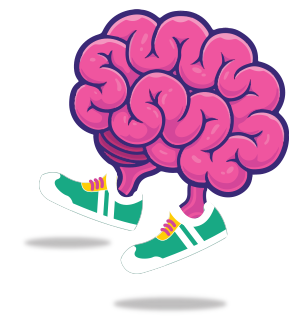
ظ…ط§ط±ط§طھظ† ط§ط³طھط§ظ†ط¨ظˆظ„ ع†ظ†ط¯ ع©غŒظ„ظˆظ…طھط± ط§ط³طھطں
ظ…ط§ط±ط§طھظ† ط§ط³طھط§ظ†ط¨ظˆظ„ غŒع© ظ…ط³ط§ط¨ظ‚ظ‡ غ´غ² ع©غŒظ„ظˆظ…طھط±غŒ (غ²غ¶.غ² ظ…ط§غŒظ„) ط§ط³طھ. ط§غŒظ† ظ…ط³ط§ط¨ظ‚ظ‡ ط§ط² ط³ظ…طھ ط¢ط³غŒط§غŒغŒ ط§ط³طھط§ظ†ط¨ظˆظ„ ط´ط±ظˆط¹ ظ…غŒâ€Œط´ظˆط¯طŒ ط§ط² ظ¾ظ„ ط¨ظˆط³ظپظˆط± ط¹ط¨ظˆط± ظ…غŒâ€Œع©ظ†ط¯ ظˆ ط¯ط± ط³ظ…طھ ط§ط±ظˆظ¾ط§غŒغŒ ط¯ط± ظ‡غŒظ¾ظˆط¯ط±ظˆظ… طھط§ط±غŒط®غŒ ط¨ظ‡ ظ¾ط§غŒط§ظ† ظ…غŒâ€Œط±ط³ط¯.
 ط§غŒظ† ظ…ط§ط±ط§طھظ† ظ‡ط± ط³ط§ظ„ظ‡ ط¯ط± ظ…ط§ظ‡ ظ†ظˆط§ظ…ط¨ط± ط¨ط±ع¯ط²ط§ط± ظ…غŒâ€Œط´ظˆط¯ ظˆ ط¯ظˆظ†ط¯ع¯ط§ظ†غŒ ط§ط² ط³ط±ط§ط³ط± ط¬ظ‡ط§ظ† ط±ط§ ط¨ظ‡ ط®ظˆط¯ ط¬ط°ط¨ ظ…غŒâ€Œع©ظ†ط¯.
ط§غŒظ† ظ…ط§ط±ط§طھظ† ظ‡ط± ط³ط§ظ„ظ‡ ط¯ط± ظ…ط§ظ‡ ظ†ظˆط§ظ…ط¨ط± ط¨ط±ع¯ط²ط§ط± ظ…غŒâ€Œط´ظˆط¯ ظˆ ط¯ظˆظ†ط¯ع¯ط§ظ†غŒ ط§ط² ط³ط±ط§ط³ط± ط¬ظ‡ط§ظ† ط±ط§ ط¨ظ‡ ط®ظˆط¯ ط¬ط°ط¨ ظ…غŒâ€Œع©ظ†ط¯.
Cr: heytripster.com
|



 غ±. ظ…ط§ط±ط§طھظ† ط§ط³طھط§ظ†ط¨ظˆظ„ ع†ظ‡ ط²ظ…ط§ظ†غŒ ط¨ط±ع¯ط²ط§ط± ظ…غŒâ€Œط´ظˆط¯طں
غ±. ظ…ط§ط±ط§طھظ† ط§ط³طھط§ظ†ط¨ظˆظ„ ع†ظ‡ ط²ظ…ط§ظ†غŒ ط¨ط±ع¯ط²ط§ط± ظ…غŒâ€Œط´ظˆط¯طں غ². ظ…ط³ط§ط¨ظ‚ظ‡ ع©ط¬ط§ ط¨ط±ع¯ط²ط§ط± ظ…غŒâ€Œط´ظˆط¯طں
غ². ظ…ط³ط§ط¨ظ‚ظ‡ ع©ط¬ط§ ط¨ط±ع¯ط²ط§ط± ظ…غŒâ€Œط´ظˆط¯طں غ³. ع†ظ†ط¯ ظ†ظپط± ط¯ط± ظ…ط³ط§ط¨ظ‚ظ‡ ط´ط±ع©طھ ظ…غŒâ€Œع©ظ†ظ†ط¯طں
غ³. ع†ظ†ط¯ ظ†ظپط± ط¯ط± ظ…ط³ط§ط¨ظ‚ظ‡ ط´ط±ع©طھ ظ…غŒâ€Œع©ظ†ظ†ط¯طں

 غ´. ط¬ظˆ ظ…ط³ط§ط¨ظ‚ظ‡ ع†ع¯ظˆظ†ظ‡ ط§ط³طھطں
غ´. ط¬ظˆ ظ…ط³ط§ط¨ظ‚ظ‡ ع†ع¯ظˆظ†ظ‡ ط§ط³طھطں
 غ·. ظ…ط³غŒط± ظ…ط§ط±ط§طھظ† ط§ط³طھط§ظ†ط¨ظˆظ„ غ²غ°غ²غ³ ع©ط¬ط§ط³طھطں
غ·. ظ…ط³غŒط± ظ…ط§ط±ط§طھظ† ط§ط³طھط§ظ†ط¨ظˆظ„ غ²غ°غ²غ³ ع©ط¬ط§ط³طھطں ع†ظ†ط¯ ظ†ظپط± ط¯ط± ظ…ط§ط±ط§طھظ† ط§ط³طھط§ظ†ط¨ظˆظ„ ط´ط±ع©طھ ظ…غŒâ€Œع©ظ†ظ†ط¯طں
ع†ظ†ط¯ ظ†ظپط± ط¯ط± ظ…ط§ط±ط§طھظ† ط§ط³طھط§ظ†ط¨ظˆظ„ ط´ط±ع©طھ ظ…غŒâ€Œع©ظ†ظ†ط¯طں
 ط§ط² ط³ط®طھ طھط±غŒظ† طھط§ ط³ط§ط¯ظ‡ طھط±غŒظ† ظ…ط§ط±ط§طھظ† ط¨ط±ط§غŒ ط¯ظˆغŒط¯ظ†.
ط§ط² ط³ط®طھ طھط±غŒظ† طھط§ ط³ط§ط¯ظ‡ طھط±غŒظ† ظ…ط§ط±ط§طھظ† ط¨ط±ط§غŒ ط¯ظˆغŒط¯ظ†. ط§ظ…ط§ ط¨ط§ ظ…طط¨ظˆط¨غŒطھ ط¨غŒط´طھط± ط§غŒظ† ظ…ط§ط±ط§طھظ†â€Œظ‡ط§طŒ ط¨ط§غŒط¯ ط¯ط± ظ…ظˆط±ط¯ ط«ط¨طھ‌ظ†ط§ظ…طŒ ط§ط³طھط±ط§طھعکغŒ ظ…ظ†ط§ط³ط¨ ط¯ط§ط´طھظ‡ ط¨ط§ط´غŒط¯ ظˆ ط¯ط± ط¨ط±ط®غŒ ظ…ظˆط§ط±ط¯طŒ ط³ط§ظ„‌ظ‡ط§ ظ‚ط¨ظ„ ط¯ط± ظ…ظˆط±ط¯ ط§غŒظ†ع©ظ‡ ع†ط·ظˆط± ظ…غŒâ€Œط®ظˆط§ظ‡غŒط¯ ط¯ط± غŒع© ظ…ط§ط±ط§طھظ† ط¨ط²ط±ع¯ ط¬ظ‡ط§ظ†غŒ ط¨ظ‡ ظ…ظˆظپظ‚غŒطھ ط¯ط³طھ ظ¾غŒط¯ط§ ع©ظ†غŒط¯طŒ ط¨ط±ظ†ط§ظ…ظ‡â€Œط±غŒط²غŒ ع©ظ†غŒط¯. ظ†ظ‡ ظپظ‚ط· طھظ…ط±غŒظ† ظˆ ط¯ظˆغŒط¯ظ† ظ…ط§ط±ط§طھظ†.
ط§ظ…ط§ ط¨ط§ ظ…طط¨ظˆط¨غŒطھ ط¨غŒط´طھط± ط§غŒظ† ظ…ط§ط±ط§طھظ†â€Œظ‡ط§طŒ ط¨ط§غŒط¯ ط¯ط± ظ…ظˆط±ط¯ ط«ط¨طھ‌ظ†ط§ظ…طŒ ط§ط³طھط±ط§طھعکغŒ ظ…ظ†ط§ط³ط¨ ط¯ط§ط´طھظ‡ ط¨ط§ط´غŒط¯ ظˆ ط¯ط± ط¨ط±ط®غŒ ظ…ظˆط§ط±ط¯طŒ ط³ط§ظ„‌ظ‡ط§ ظ‚ط¨ظ„ ط¯ط± ظ…ظˆط±ط¯ ط§غŒظ†ع©ظ‡ ع†ط·ظˆط± ظ…غŒâ€Œط®ظˆط§ظ‡غŒط¯ ط¯ط± غŒع© ظ…ط§ط±ط§طھظ† ط¨ط²ط±ع¯ ط¬ظ‡ط§ظ†غŒ ط¨ظ‡ ظ…ظˆظپظ‚غŒطھ ط¯ط³طھ ظ¾غŒط¯ط§ ع©ظ†غŒط¯طŒ ط¨ط±ظ†ط§ظ…ظ‡â€Œط±غŒط²غŒ ع©ظ†غŒط¯. ظ†ظ‡ ظپظ‚ط· طھظ…ط±غŒظ† ظˆ ط¯ظˆغŒط¯ظ† ظ…ط§ط±ط§طھظ†. ط§غŒظ† ط¨ط¯ط§ظ† ظ…ط¹ظ†ط§ط³طھ ع©ظ‡ ظˆظ‚طھغŒ غŒع©غŒ ط§ط² ط§غŒظ† ظ…ط³ط§ط¨ظ‚ط§طھ ط±ط§ ط§ط¬ط±ط§ ظ…غŒâ€Œع©ظ†غŒط¯طŒ ظ…غŒâ€Œطھظˆط§ظ†غŒط¯ ط³ط·ط ط¨ط³غŒط§ط± ط¨ط§ظ„ط§غŒغŒ ط§ط² ط³ط§ط²ظ…ط§ظ†ط¯ظ‡غŒ ظˆ طط±ظپظ‡ ط§غŒ ط¨ظˆط¯ظ† ط±ط§ ط§ظ†طھط¸ط§ط± ط¯ط§ط´طھظ‡ ط¨ط§ط´غŒط¯.
ط§غŒظ† ط¨ط¯ط§ظ† ظ…ط¹ظ†ط§ط³طھ ع©ظ‡ ظˆظ‚طھغŒ غŒع©غŒ ط§ط² ط§غŒظ† ظ…ط³ط§ط¨ظ‚ط§طھ ط±ط§ ط§ط¬ط±ط§ ظ…غŒâ€Œع©ظ†غŒط¯طŒ ظ…غŒâ€Œطھظˆط§ظ†غŒط¯ ط³ط·ط ط¨ط³غŒط§ط± ط¨ط§ظ„ط§غŒغŒ ط§ط² ط³ط§ط²ظ…ط§ظ†ط¯ظ‡غŒ ظˆ طط±ظپظ‡ ط§غŒ ط¨ظˆط¯ظ† ط±ط§ ط§ظ†طھط¸ط§ط± ط¯ط§ط´طھظ‡ ط¨ط§ط´غŒط¯. طھظˆع©غŒظˆ: ط§ظˆظ„غŒظ† غŒع©ط´ظ†ط¨ظ‡ ظ…ط§ظ‡ ظ…ط§ط±ط³ // 3 ظ…ط§ط±ط³ 2024
طھظˆع©غŒظˆ: ط§ظˆظ„غŒظ† غŒع©ط´ظ†ط¨ظ‡ ظ…ط§ظ‡ ظ…ط§ط±ط³ // 3 ظ…ط§ط±ط³ 2024 ط¯ظˆغŒط¯ظ† ط¨ط§ غŒع© ظ…ظˆط³ط³ظ‡ ط®غŒط±غŒظ‡ غŒع© ع¯ط²غŒظ†ظ‡ ظ…طط¨ظˆط¨ ط§ط³طھطŒ ط§ظ…ط§ ط¨ط§غŒط¯ طط¯ط§ظ‚ظ„ ع©ظ…ع© ظ…ط§ظ„غŒ ط±ط§ ط¬ظ…ط¹ ط¢ظˆط±غŒ ع©ظ†غŒط¯. (ط´ط±ط§غŒط· ظ‡ط± ع©ط¯ط§ظ… ظ…طھظپط§ظˆطھ ط§ط³طھطŒ ط¨ظ†ط§ط¨ط±ط§غŒظ† ظˆط¨ ط³ط§غŒطھ ظ‡ط± ظ…ط³ط§ط¨ظ‚ظ‡ ط±ط§ ط¨ط±ط§غŒ ط§ط·ظ„ط§ط¹ط§طھ ط¨غŒط´طھط± ط¨ط±ط±ط³غŒ ع©ظ†غŒط¯).
ط¯ظˆغŒط¯ظ† ط¨ط§ غŒع© ظ…ظˆط³ط³ظ‡ ط®غŒط±غŒظ‡ غŒع© ع¯ط²غŒظ†ظ‡ ظ…طط¨ظˆط¨ ط§ط³طھطŒ ط§ظ…ط§ ط¨ط§غŒط¯ طط¯ط§ظ‚ظ„ ع©ظ…ع© ظ…ط§ظ„غŒ ط±ط§ ط¬ظ…ط¹ ط¢ظˆط±غŒ ع©ظ†غŒط¯. (ط´ط±ط§غŒط· ظ‡ط± ع©ط¯ط§ظ… ظ…طھظپط§ظˆطھ ط§ط³طھطŒ ط¨ظ†ط§ط¨ط±ط§غŒظ† ظˆط¨ ط³ط§غŒطھ ظ‡ط± ظ…ط³ط§ط¨ظ‚ظ‡ ط±ط§ ط¨ط±ط§غŒ ط§ط·ظ„ط§ط¹ط§طھ ط¨غŒط´طھط± ط¨ط±ط±ط³غŒ ع©ظ†غŒط¯). ط«ط¨طھ ظ†ط§ظ… ظ…ط¹ظ…ظˆظ„ط§ظ‹ط¯ط± ظ…ط§ظ‡ ط§ظˆطھ ط¢ط؛ط§ط² ظ…غŒ ط´ظˆط¯. ط§ع¯ط± غŒع© ط¯ظˆظ†ط¯ظ‡ ط³ط±غŒط¹ ظ‡ط³طھغŒط¯طŒ ظ…ظ…ع©ظ† ط§ط³طھ ط¨طھظˆط§ظ†غŒط¯ ط§ط² “ظˆط±ظˆط¯ ظ†غŒظ…ظ‡ طط±ظپظ‡ ط§غŒ” طھظˆع©غŒظˆ ط§ط³طھظپط§ط¯ظ‡ ع©ظ†غŒط¯ ع©ظ‡ ط¨ظ‡ ط¹ظ†ظˆط§ظ† ط¨ط±ظ†ط§ظ…ظ‡
ط«ط¨طھ ظ†ط§ظ… ظ…ط¹ظ…ظˆظ„ط§ظ‹ط¯ط± ظ…ط§ظ‡ ط§ظˆطھ ط¢ط؛ط§ط² ظ…غŒ ط´ظˆط¯. ط§ع¯ط± غŒع© ط¯ظˆظ†ط¯ظ‡ ط³ط±غŒط¹ ظ‡ط³طھغŒط¯طŒ ظ…ظ…ع©ظ† ط§ط³طھ ط¨طھظˆط§ظ†غŒط¯ ط§ط² “ظˆط±ظˆط¯ ظ†غŒظ…ظ‡ طط±ظپظ‡ ط§غŒ” طھظˆع©غŒظˆ ط§ط³طھظپط§ط¯ظ‡ ع©ظ†غŒط¯ ع©ظ‡ ط¨ظ‡ ط¹ظ†ظˆط§ظ† ط¨ط±ظ†ط§ظ…ظ‡  ط¨ط±ط§غŒ ظ…ط±ط¯ط§ظ†طŒ ط¨ط§غŒط¯ غŒع©غŒ ط§ط² ط§غŒظ† آ ظ…ط§ط±ط§طھظ† ظ‡ط§ ط±ط§ ط³ط±غŒط¹طھط± ط§ط² 2:32:00 ط¨ظ‡ ظ¾ط§غŒط§ظ† ط¨ط±ط³ط§ظ†ظ†ط¯طŒ ظˆ ط¨ط±ط§غŒ ط²ظ†ط§ظ†طŒ ط²ظ…ط§ظ† ط§طھظ…ط§ظ… ظ…ط³ط§ط¨ظ‚ظ‡ 3:19:00 ط§ط³طھ (ع¯ط±ظˆظ‡ ط³ظ†غŒ ظˆط¬ظˆط¯ ظ†ط¯ط§ط±ط¯طŒ ط§ظ…ط§ ط¯ظˆظ†ط¯ع¯ط§ظ† ط³ط±غŒط¹طھط± ط§ظˆظ„ظˆغŒطھ ط¯ط§ط±ظ†ط¯).
ط¨ط±ط§غŒ ظ…ط±ط¯ط§ظ†طŒ ط¨ط§غŒط¯ غŒع©غŒ ط§ط² ط§غŒظ† آ ظ…ط§ط±ط§طھظ† ظ‡ط§ ط±ط§ ط³ط±غŒط¹طھط± ط§ط² 2:32:00 ط¨ظ‡ ظ¾ط§غŒط§ظ† ط¨ط±ط³ط§ظ†ظ†ط¯طŒ ظˆ ط¨ط±ط§غŒ ط²ظ†ط§ظ†طŒ ط²ظ…ط§ظ† ط§طھظ…ط§ظ… ظ…ط³ط§ط¨ظ‚ظ‡ 3:19:00 ط§ط³طھ (ع¯ط±ظˆظ‡ ط³ظ†غŒ ظˆط¬ظˆط¯ ظ†ط¯ط§ط±ط¯طŒ ط§ظ…ط§ ط¯ظˆظ†ط¯ع¯ط§ظ† ط³ط±غŒط¹طھط± ط§ظˆظ„ظˆغŒطھ ط¯ط§ط±ظ†ط¯). ط¨ط±ط§غŒ ظ…ط³ط§ط¨ظ‚ظ‡ 2023طŒ ط«ط¨طھ ظ†ط§ظ… ظپظ‚ط· غŒع© ظ‡ظپطھظ‡ ط·ظˆظ„ ع©ط´غŒط¯ ظˆ ط§ط² ظ‡ظ…ظ‡ ظˆط§ط¬ط¯غŒظ† ط´ط±ط§غŒط· ط¯ط¹ظˆطھ ط´ط¯ طھط§ ط¨ط§ ظ‡ط± ط²ظ…ط§ظ†غŒ ط¯ط± ط·ظˆظ„ ط¢ظ† ظ‡ظپطھظ‡ ط«ط¨طھ ظ†ط§ظ… ع©ظ†ظ†ط¯طŒ طµط±ظپ ظ†ط¸ط± ط§ط² ط§غŒظ†ع©ظ‡ ط²ظ…ط§ظ† ط¢ظ†ظ‡ط§ 30 ط¯ظ‚غŒظ‚ظ‡ غŒط§ 1 ط«ط§ظ†غŒظ‡ ط¨ط§ ط´ط±ط§غŒط· ظ…ط³ط§ط¨ظ‚ظ‡ ط§ط®طھظ„ط§ظپ ط¯ط§ط´طھظ‡ ط¨ط§ط´ط¯.
ط¨ط±ط§غŒ ظ…ط³ط§ط¨ظ‚ظ‡ 2023طŒ ط«ط¨طھ ظ†ط§ظ… ظپظ‚ط· غŒع© ظ‡ظپطھظ‡ ط·ظˆظ„ ع©ط´غŒط¯ ظˆ ط§ط² ظ‡ظ…ظ‡ ظˆط§ط¬ط¯غŒظ† ط´ط±ط§غŒط· ط¯ط¹ظˆطھ ط´ط¯ طھط§ ط¨ط§ ظ‡ط± ط²ظ…ط§ظ†غŒ ط¯ط± ط·ظˆظ„ ط¢ظ† ظ‡ظپطھظ‡ ط«ط¨طھ ظ†ط§ظ… ع©ظ†ظ†ط¯طŒ طµط±ظپ ظ†ط¸ط± ط§ط² ط§غŒظ†ع©ظ‡ ط²ظ…ط§ظ† ط¢ظ†ظ‡ط§ 30 ط¯ظ‚غŒظ‚ظ‡ غŒط§ 1 ط«ط§ظ†غŒظ‡ ط¨ط§ ط´ط±ط§غŒط· ظ…ط³ط§ط¨ظ‚ظ‡ ط§ط®طھظ„ط§ظپ ط¯ط§ط´طھظ‡ ط¨ط§ط´ط¯. ط¯ط± ط³ط§ظ„‌ظ‡ط§غŒ ط§ط®غŒط±طŒ ط¨ط±ط®غŒ ط§ط² ط¯ظˆظ†ط¯ع¯ط§ظ† ظˆط§ط¬ط¯ ط´ط±ط§غŒط· ط§ظ…ع©ط§ظ† ظˆط±ظˆط¯ ظ†ط¯ط§ط´طھظ†ط¯طŒ ط²غŒط±ط§ طھط¹ط¯ط§ط¯ ط¯ط±ط®ظˆط§ط³طھ ظ‡ط§ ط¨غŒط´ ط§ط² ط¸ط±ظپغŒطھ ط«ط¨طھ ظ†ط§ظ… ط¨ظˆط¯. ط¨ط±ط§غŒ ظ…ط§ط±ط§طھظ† 2021طŒ ط¨غŒط´ ط§ط² 9000 ظˆط§ط¬ط¯ ط´ط±ط§غŒط· ظ¾ط°غŒط±ظپطھظ‡ ظ†ط´ط¯ظ†ط¯. ط§ظ…ط§ ط¨ط±ط§غŒ ط³ط§ظ„ 2023طŒ ظ‡غŒع† ظ…طط¯ظˆط¯غŒطھ طھط±ط³ظ†ط§ع©غŒ ط¯ط± ط¨ظˆط³طھظˆظ† ظˆط¬ظˆط¯ ظ†ط¯ط§ط´طھ.
ط¯ط± ط³ط§ظ„‌ظ‡ط§غŒ ط§ط®غŒط±طŒ ط¨ط±ط®غŒ ط§ط² ط¯ظˆظ†ط¯ع¯ط§ظ† ظˆط§ط¬ط¯ ط´ط±ط§غŒط· ط§ظ…ع©ط§ظ† ظˆط±ظˆط¯ ظ†ط¯ط§ط´طھظ†ط¯طŒ ط²غŒط±ط§ طھط¹ط¯ط§ط¯ ط¯ط±ط®ظˆط§ط³طھ ظ‡ط§ ط¨غŒط´ ط§ط² ط¸ط±ظپغŒطھ ط«ط¨طھ ظ†ط§ظ… ط¨ظˆط¯. ط¨ط±ط§غŒ ظ…ط§ط±ط§طھظ† 2021طŒ ط¨غŒط´ ط§ط² 9000 ظˆط§ط¬ط¯ ط´ط±ط§غŒط· ظ¾ط°غŒط±ظپطھظ‡ ظ†ط´ط¯ظ†ط¯. ط§ظ…ط§ ط¨ط±ط§غŒ ط³ط§ظ„ 2023طŒ ظ‡غŒع† ظ…طط¯ظˆط¯غŒطھ طھط±ط³ظ†ط§ع©غŒ ط¯ط± ط¨ظˆط³طھظˆظ† ظˆط¬ظˆط¯ ظ†ط¯ط§ط´طھ. ط¢ط¯ط§ظ…ط² ظ…غŒâ€Œع¯ظˆغŒط¯ ظ‡ظ…ظ‡ ع†غŒط² ظ…ط«ظ„ ظ„ط§طھط§ط±غŒ ط¢ظ…ط±غŒع©ط§غŒغŒâ€Œظ‡ط§ ط§ط³طھ. ط¨غŒظ† ط¢ظˆط±غŒظ„ ظˆ ظ…غŒطŒ ط¯ط±ط®ظˆط§ط³طھ ظ…غŒâ€Œط¯ظ‡غŒط¯طŒ ط¯ط± ظ…ط§ظ‡ ط§ع©طھط¨ط± ظ†طھط§غŒط¬ ظ…ط´ط®طµ ظ…غŒâ€Œط´ظˆط¯ ع©ظ‡ ط®ظˆط´ ط´ط§ظ†ط³ ظ‡ط³طھغŒط¯ غŒط§ ط®غŒط±. ط¢ط¯ط§ظ…ط² ظ…غŒâ€Œع¯ظˆغŒط¯ ط´ط§ظ†ط³ ط´ظ…ط§ ط¨ط±ط§غŒ ع©ط³ط¨ ط¨ظ„غŒط· ظˆط±ظˆط¯غŒ ط§ط² ط·ط±غŒظ‚ ظ„ط§طھط§ط±غŒ ظ„ظ†ط¯ظ† طھع© ط±ظ‚ظ…غŒ ط§ط³طھ.
ط¢ط¯ط§ظ…ط² ظ…غŒâ€Œع¯ظˆغŒط¯ ظ‡ظ…ظ‡ ع†غŒط² ظ…ط«ظ„ ظ„ط§طھط§ط±غŒ ط¢ظ…ط±غŒع©ط§غŒغŒâ€Œظ‡ط§ ط§ط³طھ. ط¨غŒظ† ط¢ظˆط±غŒظ„ ظˆ ظ…غŒطŒ ط¯ط±ط®ظˆط§ط³طھ ظ…غŒâ€Œط¯ظ‡غŒط¯طŒ ط¯ط± ظ…ط§ظ‡ ط§ع©طھط¨ط± ظ†طھط§غŒط¬ ظ…ط´ط®طµ ظ…غŒâ€Œط´ظˆط¯ ع©ظ‡ ط®ظˆط´ ط´ط§ظ†ط³ ظ‡ط³طھغŒط¯ غŒط§ ط®غŒط±. ط¢ط¯ط§ظ…ط² ظ…غŒâ€Œع¯ظˆغŒط¯ ط´ط§ظ†ط³ ط´ظ…ط§ ط¨ط±ط§غŒ ع©ط³ط¨ ط¨ظ„غŒط· ظˆط±ظˆط¯غŒ ط§ط² ط·ط±غŒظ‚ ظ„ط§طھط§ط±غŒ ظ„ظ†ط¯ظ† طھع© ط±ظ‚ظ…غŒ ط§ط³طھ. ط§ع¯ط± غŒع© ط¯ظˆظ†ط¯ظ‡ ظ…ط§ط±ط§طھظ† ط³ط±غŒط¹ ظ‡ط³طھغŒط¯طŒ ظ…غŒ طھظˆط§ظ†غŒط¯ ط§ط² ط·ط±غŒظ‚ Good For Age ط¯ط±ط®ظˆط§ط³طھ ط¯ظ‡غŒط¯
ط§ع¯ط± غŒع© ط¯ظˆظ†ط¯ظ‡ ظ…ط§ط±ط§طھظ† ط³ط±غŒط¹ ظ‡ط³طھغŒط¯طŒ ظ…غŒ طھظˆط§ظ†غŒط¯ ط§ط² ط·ط±غŒظ‚ Good For Age ط¯ط±ط®ظˆط§ط³طھ ط¯ظ‡غŒط¯ ط«ط¨طھ ظ†ط§ظ… ط§ط² ط§ظˆط§ط³ط· ط§ع©طھط¨ط± ط¢ط؛ط§ط² ظ…غŒ ط´ظˆط¯ ظˆ طھط§ ط§ظˆط§غŒظ„ ظ†ظˆط§ظ…ط¨ط± ط§ط¯ط§ظ…ظ‡ ط¯ط§ط±ط¯.
ط«ط¨طھ ظ†ط§ظ… ط§ط² ط§ظˆط§ط³ط· ط§ع©طھط¨ط± ط¢ط؛ط§ط² ظ…غŒ ط´ظˆط¯ ظˆ طھط§ ط§ظˆط§غŒظ„ ظ†ظˆط§ظ…ط¨ط± ط§ط¯ط§ظ…ظ‡ ط¯ط§ط±ط¯. ط§ظ…ط§ ط¨ط§ طھظˆط¬ظ‡ ط¨ظ‡ ط³ط§ط¨ظ‚ظ‡ طھط§ط±غŒط®غŒ ظˆ ظپط¶ط§غŒ ط¯ظˆط³طھط§ظ†ظ‡طŒ ظ…طط¨ظˆط¨غŒطھ ظˆ ط§ط³طھظ‚ط¨ط§ظ„ ظپط²ط§غŒظ†ط¯ظ‡ ط§غŒ ط¯ط± ط¨غŒظ† ط¯ظˆظ†ط¯ع¯ط§ظ† ط¯ط§ط±ط¯.
ط§ظ…ط§ ط¨ط§ طھظˆط¬ظ‡ ط¨ظ‡ ط³ط§ط¨ظ‚ظ‡ طھط§ط±غŒط®غŒ ظˆ ظپط¶ط§غŒ ط¯ظˆط³طھط§ظ†ظ‡طŒ ظ…طط¨ظˆط¨غŒطھ ظˆ ط§ط³طھظ‚ط¨ط§ظ„ ظپط²ط§غŒظ†ط¯ظ‡ ط§غŒ ط¯ط± ط¨غŒظ† ط¯ظˆظ†ط¯ع¯ط§ظ† ط¯ط§ط±ط¯. ط¯ط± ط³ط§ظ„‌ظ‡ط§غŒ ع¯ط°ط´طھظ‡طŒ ط¨ط±ط§غŒ ظ‚ط±ط¹ظ‡â€Œع©ط´غŒ ع©ظ‡ ط§ط² ط§ع©طھط¨ط± ط´ط±ظˆط¹ ظ…غŒâ€Œط´ط¯ ط«ط¨طھ ظ†ط§ظ… ظ…غŒع©ط±ط¯غŒط¯ ظˆ ط¯ط± ط¯ط³ط§ظ…ط¨ط± ظ†طھط§غŒط¬ ظ…ط´ط®طµ ظ…غŒ ط´ط¯.
ط¯ط± ط³ط§ظ„‌ظ‡ط§غŒ ع¯ط°ط´طھظ‡طŒ ط¨ط±ط§غŒ ظ‚ط±ط¹ظ‡â€Œع©ط´غŒ ع©ظ‡ ط§ط² ط§ع©طھط¨ط± ط´ط±ظˆط¹ ظ…غŒâ€Œط´ط¯ ط«ط¨طھ ظ†ط§ظ… ظ…غŒع©ط±ط¯غŒط¯ ظˆ ط¯ط± ط¯ط³ط§ظ…ط¨ط± ظ†طھط§غŒط¬ ظ…ط´ط®طµ ظ…غŒ ط´ط¯. ط§ع¯ط± ط¯ط± ط¯ظ‡ظ‡ ع¯ط°ط´طھظ‡ ظ¾ظ†ط¬ ط¨ط§ط± غŒط§ ط¨غŒط´طھط± ط¯ط± ظ…ط³ط§ط¨ظ‚ظ‡ ط´ط±ع©طھ ع©ط±ط¯ظ‡ ط¨ط§ط´غŒط¯ ظˆ ط§ع¯ط± ط§ط² ط³ط§ظ„ 2008 ع†ظ‡ط§ط± ط¨ط§ط± غŒط§ ط¨غŒط´طھط± ظ…ط³ط§ط¨ظ‚ظ‡ غ¸ ع©غŒظ„ظˆظ…طھط± آ (Bank of America Shamrock Shuffle 8K) ط±ط§ ط¨ظ‡ ظ¾ط§غŒط§ظ† ط±ط³ط§ظ†ط¯ظ‡ ط¨ط§ط´غŒط¯ ظˆ ط¨ط±ط§غŒ Shamrock Shuffle ط³ط§ظ„ ط¨ط¹ط¯ ظ†غŒط² ط«ط¨طھ ظ†ط§ظ… ع©ط±ط¯ظ‡ ط¨ط§ط´غŒط¯طŒ ظˆط±ظˆط¯ ط´ظ…ط§ طھط¶ظ…غŒظ† ط´ط¯ظ‡ ط§ط³طھ. ظ‡ظ…ع†ظ†غŒظ† ط´ط±ط§غŒط·غŒ ظˆط¬ظˆط¯ ط¯ط§ط±ط¯ ع©ظ‡ ط¨ط§ طھظˆط¬ظ‡ ط¨ظ‡ ط²ظ…ط§ظ† ط§طھظ…ط§ظ… ظ…ط³ط§ط¨ظ‚ظ‡ ظ…غŒ طھظˆط§ظ†غŒط¯ ط¯ط± ع¯ط±ظˆظ‡ ط³ظ†غŒ ط®ظˆط¯ ط¨ط¯ظˆغŒط¯.
ط§ع¯ط± ط¯ط± ط¯ظ‡ظ‡ ع¯ط°ط´طھظ‡ ظ¾ظ†ط¬ ط¨ط§ط± غŒط§ ط¨غŒط´طھط± ط¯ط± ظ…ط³ط§ط¨ظ‚ظ‡ ط´ط±ع©طھ ع©ط±ط¯ظ‡ ط¨ط§ط´غŒط¯ ظˆ ط§ع¯ط± ط§ط² ط³ط§ظ„ 2008 ع†ظ‡ط§ط± ط¨ط§ط± غŒط§ ط¨غŒط´طھط± ظ…ط³ط§ط¨ظ‚ظ‡ غ¸ ع©غŒظ„ظˆظ…طھط± آ (Bank of America Shamrock Shuffle 8K) ط±ط§ ط¨ظ‡ ظ¾ط§غŒط§ظ† ط±ط³ط§ظ†ط¯ظ‡ ط¨ط§ط´غŒط¯ ظˆ ط¨ط±ط§غŒ Shamrock Shuffle ط³ط§ظ„ ط¨ط¹ط¯ ظ†غŒط² ط«ط¨طھ ظ†ط§ظ… ع©ط±ط¯ظ‡ ط¨ط§ط´غŒط¯طŒ ظˆط±ظˆط¯ ط´ظ…ط§ طھط¶ظ…غŒظ† ط´ط¯ظ‡ ط§ط³طھ. ظ‡ظ…ع†ظ†غŒظ† ط´ط±ط§غŒط·غŒ ظˆط¬ظˆط¯ ط¯ط§ط±ط¯ ع©ظ‡ ط¨ط§ طھظˆط¬ظ‡ ط¨ظ‡ ط²ظ…ط§ظ† ط§طھظ…ط§ظ… ظ…ط³ط§ط¨ظ‚ظ‡ ظ…غŒ طھظˆط§ظ†غŒط¯ ط¯ط± ع¯ط±ظˆظ‡ ط³ظ†غŒ ط®ظˆط¯ ط¨ط¯ظˆغŒط¯.
 ط§ع¯ط± 15 ط¨ط§ط± غŒط§ ط¨غŒط´طھط± ظ…ط§ط±ط§طھظ† ط´ظ‡ط± ظ†غŒظˆغŒظˆط±ع© ط±ط§ ط¨ظ‡ ظ¾ط§غŒط§ظ† ط±ط³ط§ظ†ط¯ظ‡ ط§غŒط¯طŒ ط§ع©ظ†ظˆظ† طھط§ ظ…ط§ط¯ط§ظ… ط§ظ„ط¹ظ…ط± ظ…غŒ طھظˆط§ظ†غŒط¯ ظˆط§ط±ط¯ ط§غŒظ† ظ…ط³ط§ط¨ظ‚ظ‡ ط´ظˆغŒط¯. (ط§ظ…ط§طŒ ظ…ط³ط§ط¨ظ‚ط§طھ ظ…ط³ظ† طھط± ط¨ظ‡ ظ…ط¯ط§ظ„ Abbotts ظ†غŒط§ط² ط¯ط§ط±ظ†ط¯).
ط§ع¯ط± 15 ط¨ط§ط± غŒط§ ط¨غŒط´طھط± ظ…ط§ط±ط§طھظ† ط´ظ‡ط± ظ†غŒظˆغŒظˆط±ع© ط±ط§ ط¨ظ‡ ظ¾ط§غŒط§ظ† ط±ط³ط§ظ†ط¯ظ‡ ط§غŒط¯طŒ ط§ع©ظ†ظˆظ† طھط§ ظ…ط§ط¯ط§ظ… ط§ظ„ط¹ظ…ط± ظ…غŒ طھظˆط§ظ†غŒط¯ ظˆط§ط±ط¯ ط§غŒظ† ظ…ط³ط§ط¨ظ‚ظ‡ ط´ظˆغŒط¯. (ط§ظ…ط§طŒ ظ…ط³ط§ط¨ظ‚ط§طھ ظ…ط³ظ† طھط± ط¨ظ‡ ظ…ط¯ط§ظ„ Abbotts ظ†غŒط§ط² ط¯ط§ط±ظ†ط¯).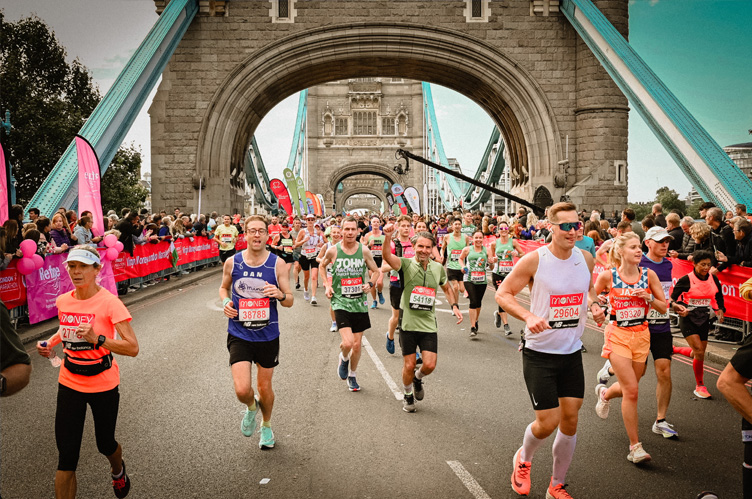 ط§ط² ط§غŒظ† ظ…طھظ‚ط§ط¶غŒط§ظ†طŒ طط¯ظˆط¯
ط§ط² ط§غŒظ† ظ…طھظ‚ط§ط¶غŒط§ظ†طŒ طط¯ظˆط¯ 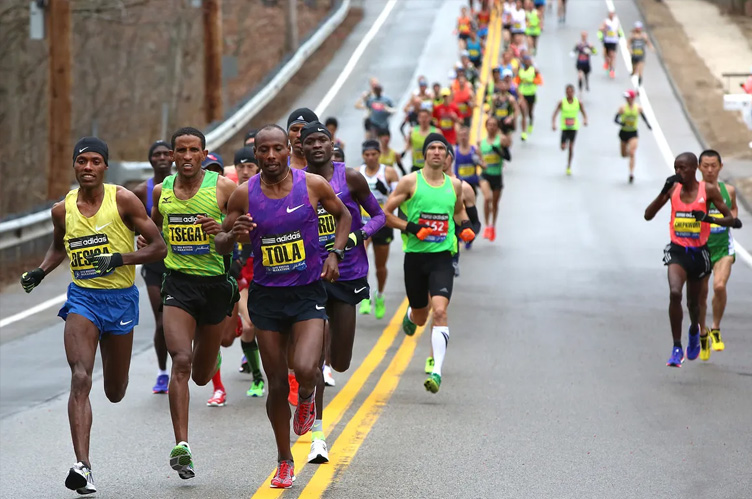 ط¢ط¯ط§ظ…ط² ع©ظ‡ ظ‡ط± 6 ظ…ط³ط§ط¨ظ‚ظ‡ ط±ط§ ط¨ظ‡ ظ¾ط§غŒط§ظ† ط±ط³ط§ظ†ط¯ظ‡ ط§ط³طھطŒ ع¯ظپطھ: “ظ‡ط± ظ…ط³ط§ط¨ظ‚ظ‡ ظپط±ط§ط² ظˆ ظپط±ظˆط¯ ط®ط§طµ ط®ظˆط¯ ط±ط§ ط¯ط§ط±ط¯”. ط§ظ…ط§ ط¨ظ‡ ط·ظˆط± ع©ظ„غŒطŒ ط¨ظˆط³طھظˆظ† ظˆ ظ†غŒظˆغŒظˆط±ع© ط¨غŒط´طھط±غŒظ† طھظ¾ظ‡â€Œظ‡ط§ ط±ط§ ط¯ط§ط±ظ†ط¯.
ط¢ط¯ط§ظ…ط² ع©ظ‡ ظ‡ط± 6 ظ…ط³ط§ط¨ظ‚ظ‡ ط±ط§ ط¨ظ‡ ظ¾ط§غŒط§ظ† ط±ط³ط§ظ†ط¯ظ‡ ط§ط³طھطŒ ع¯ظپطھ: “ظ‡ط± ظ…ط³ط§ط¨ظ‚ظ‡ ظپط±ط§ط² ظˆ ظپط±ظˆط¯ ط®ط§طµ ط®ظˆط¯ ط±ط§ ط¯ط§ط±ط¯”. ط§ظ…ط§ ط¨ظ‡ ط·ظˆط± ع©ظ„غŒطŒ ط¨ظˆط³طھظˆظ† ظˆ ظ†غŒظˆغŒظˆط±ع© ط¨غŒط´طھط±غŒظ† طھظ¾ظ‡â€Œظ‡ط§ ط±ط§ ط¯ط§ط±ظ†ط¯. ط¯ط± ظ‡ط± طµظˆط±طھطŒ ط¨ط§غŒط³طھغŒ ط§ط² ظ‚ط¨ظ„ ط¢ظ…ط§ط¯ظ‡ ط´ظˆغŒط¯طŒ ط²غŒط±ط§ ظ¾ط³ ط§ط² ط³ط§ظ„‌ظ‡ط§ ط§ظ†طھط¸ط§ط± ط¨ط±ط§غŒ ظˆط±ظˆط¯طŒ ط¢ط®ط±غŒظ† ع†غŒط²غŒ ع©ظ‡ ظ…غŒâ€Œط®ظˆط§ظ‡غŒط¯ ط§غŒظ† ط§ط³طھ ع©ظ‡ ظ…ط³ط§ط¨ظ‚ظ‡ ط§غŒ ط±ط§ ظ†طھظˆط§ظ†غŒط¯ ط¨ظ‡ ط§طھظ…ط§ظ… ط¨ط±ط³ط§ظ†غŒط¯.
ط¯ط± ظ‡ط± طµظˆط±طھطŒ ط¨ط§غŒط³طھغŒ ط§ط² ظ‚ط¨ظ„ ط¢ظ…ط§ط¯ظ‡ ط´ظˆغŒط¯طŒ ط²غŒط±ط§ ظ¾ط³ ط§ط² ط³ط§ظ„‌ظ‡ط§ ط§ظ†طھط¸ط§ط± ط¨ط±ط§غŒ ظˆط±ظˆط¯طŒ ط¢ط®ط±غŒظ† ع†غŒط²غŒ ع©ظ‡ ظ…غŒâ€Œط®ظˆط§ظ‡غŒط¯ ط§غŒظ† ط§ط³طھ ع©ظ‡ ظ…ط³ط§ط¨ظ‚ظ‡ ط§غŒ ط±ط§ ظ†طھظˆط§ظ†غŒط¯ ط¨ظ‡ ط§طھظ…ط§ظ… ط¨ط±ط³ط§ظ†غŒط¯. غŒع© ظ…ط¯ط§ظ„طŒ غŒع© ع¯ظˆط§ظ‡غŒظ†ط§ظ…ظ‡ ظˆ ط§ظ…طھغŒط§ط²ط§طھ ظˆغŒعکظ‡.
غŒع© ظ…ط¯ط§ظ„طŒ غŒع© ع¯ظˆط§ظ‡غŒظ†ط§ظ…ظ‡ ظˆ ط§ظ…طھغŒط§ط²ط§طھ ظˆغŒعکظ‡.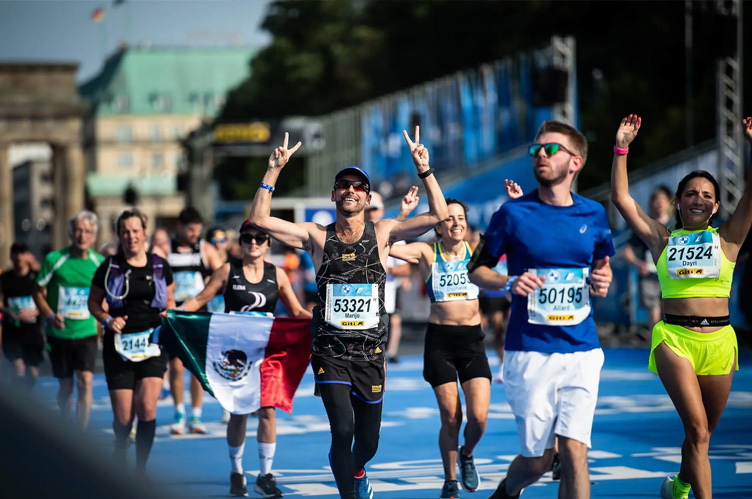
 ط¨ط±ط§غŒ ط§ظ†ط¬ط§ظ… ط§غŒظ† ع©ط§ط±طŒ ط¢ظ†ظ‡ط§ 10 ط¯ظˆظ†ط¯ظ‡ ط¨ط±طھط± ط¯ط± ط¯ظˆ ع¯ط±ظˆظ‡ آ ظ…ط±ط¯ ظˆ ط²ظ† ط¯ط± ط±ط¯ظ‡ ط³ظ†غŒ 18 طھط§ 75 ط³ط§ظ„ ط±ط§ ط§ط±ط²غŒط§ط¨غŒ ع©ط±ط¯ظ†ط¯.
ط¨ط±ط§غŒ ط§ظ†ط¬ط§ظ… ط§غŒظ† ع©ط§ط±طŒ ط¢ظ†ظ‡ط§ 10 ط¯ظˆظ†ط¯ظ‡ ط¨ط±طھط± ط¯ط± ط¯ظˆ ع¯ط±ظˆظ‡ آ ظ…ط±ط¯ ظˆ ط²ظ† ط¯ط± ط±ط¯ظ‡ ط³ظ†غŒ 18 طھط§ 75 ط³ط§ظ„ ط±ط§ ط§ط±ط²غŒط§ط¨غŒ ع©ط±ط¯ظ†ط¯.








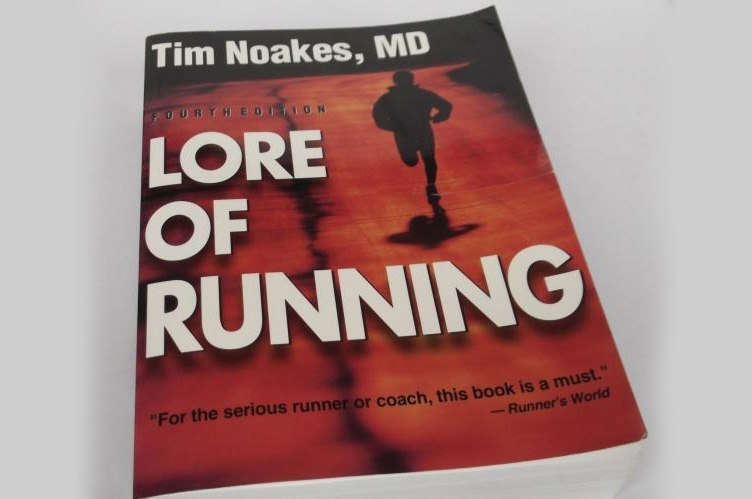 ط¯ع©طھط± طھغŒظ… ظ†ظˆع©غŒط³طŒ ظ†ظˆغŒط³ظ†ط¯ظ‡ ظˆ ظپغŒط²غŒظˆظ„ظˆعکغŒط³طھ ظˆط±ط²ط´غŒطŒ ط¯ط± ع©طھط§ط¨ Lore of Running ع¯ط²ط§ط±ط´ ظ…غŒâ€Œط¯ظ‡ط¯ ع©ظ‡ ط¹ظ„ط§ظˆظ‡ ط¨ط± ع©ط§ظ‡ط´ ط¸ط±ظپغŒطھ ظ‡ظˆط§ط²غŒطŒ ط³ط±ط¹طھ ط¯ظˆغŒط¯ظ† ظˆ طھظˆط§ظ† ط¨ط¯ظ†غŒ ظ†غŒط² ط¨ط§ ط§ظپط²ط§غŒط´ ط³ظ† ع©ط§ظ‡ط´ ظ…غŒâ€ŒغŒط§ط¨ط¯.
ط¯ع©طھط± طھغŒظ… ظ†ظˆع©غŒط³طŒ ظ†ظˆغŒط³ظ†ط¯ظ‡ ظˆ ظپغŒط²غŒظˆظ„ظˆعکغŒط³طھ ظˆط±ط²ط´غŒطŒ ط¯ط± ع©طھط§ط¨ Lore of Running ع¯ط²ط§ط±ط´ ظ…غŒâ€Œط¯ظ‡ط¯ ع©ظ‡ ط¹ظ„ط§ظˆظ‡ ط¨ط± ع©ط§ظ‡ط´ ط¸ط±ظپغŒطھ ظ‡ظˆط§ط²غŒطŒ ط³ط±ط¹طھ ط¯ظˆغŒط¯ظ† ظˆ طھظˆط§ظ† ط¨ط¯ظ†غŒ ظ†غŒط² ط¨ط§ ط§ظپط²ط§غŒط´ ط³ظ† ع©ط§ظ‡ط´ ظ…غŒâ€ŒغŒط§ط¨ط¯.
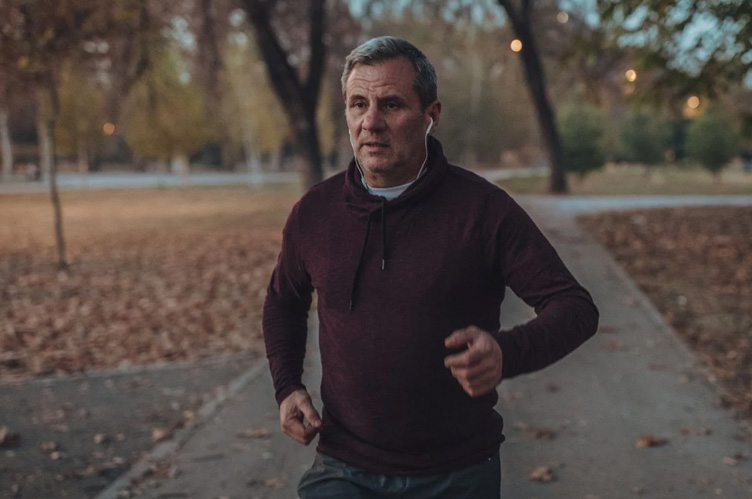 غ¶ ظ†ع©طھظ‡ ط¨ط±ط§غŒ ع©ط§ظ‡ط´ ط§ظپطھ ط¹ظ…ظ„ع©ط±ط¯ ظ…ط±طھط¨ط· ط¨ط§ ط³ظ† ط¯ط± ط¯ظˆغŒط¯ظ†
غ¶ ظ†ع©طھظ‡ ط¨ط±ط§غŒ ع©ط§ظ‡ط´ ط§ظپطھ ط¹ظ…ظ„ع©ط±ط¯ ظ…ط±طھط¨ط· ط¨ط§ ط³ظ† ط¯ط± ط¯ظˆغŒط¯ظ†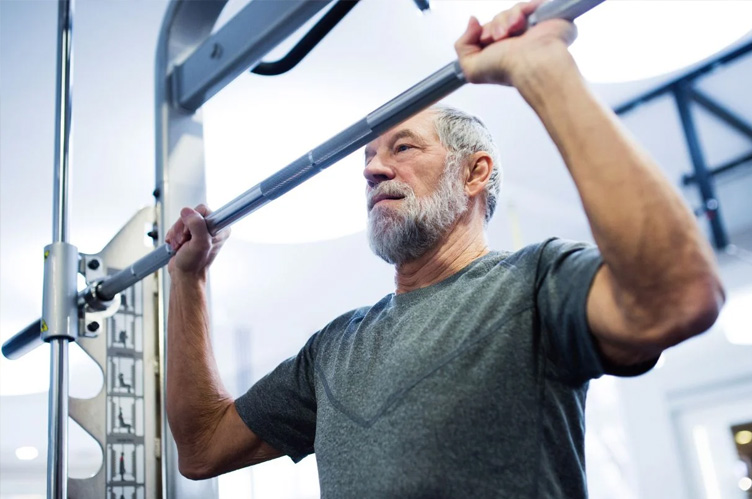 #غ²: ط´غŒط¨â€Œط¯ظˆغŒ (Run Hills)
#غ²: ط´غŒط¨â€Œط¯ظˆغŒ (Run Hills)


 طھط³طھ ع©ظˆظ¾ط± ع†غŒط³طھطں
طھط³طھ ع©ظˆظ¾ط± ع†غŒط³طھطں ع†ع¯ظˆظ†ظ‡ طھط³طھ ع©ظˆظ¾ط± ط±ط§ ط§ظ†ط¬ط§ظ… ط¯ظ‡غŒظ…طں
ع†ع¯ظˆظ†ظ‡ طھط³طھ ع©ظˆظ¾ط± ط±ط§ ط§ظ†ط¬ط§ظ… ط¯ظ‡غŒظ…طں
 ع†ع¯ظˆظ†ظ‡ طھظ…ط±غŒظ†â€Œظ‡ط§غŒ ط®ظˆط¯ ط±ط§ ط¨ط±ط§ط³ط§ط³ ظ†طھغŒط¬ظ‡ طھط³طھ ع©ظˆظ¾ط± ط¨ط±ظ†ط§ظ…ظ‡â€Œط±غŒط²غŒ ع©ظ†غŒظ…طں
ع†ع¯ظˆظ†ظ‡ طھظ…ط±غŒظ†â€Œظ‡ط§غŒ ط®ظˆط¯ ط±ط§ ط¨ط±ط§ط³ط§ط³ ظ†طھغŒط¬ظ‡ طھط³طھ ع©ظˆظ¾ط± ط¨ط±ظ†ط§ظ…ظ‡â€Œط±غŒط²غŒ ع©ظ†غŒظ…طں



 ظ¾ط²ط´ع© ظ…ظ…ع©ظ† ط§ط³طھ ط§غŒظ† ظˆط¶ط¹غŒطھ ط±ط§ ط¨ظ‡ ط¹ظ†ظˆط§ظ† ط³ظ†ط¯ط±ظ… ط§ط³طھط±ط³ طھغŒط¨غŒط§ ط¯ط§ط®ظ„غŒ (MTSS-medial tibial stress syndrome ) ظ…ط¹ط±ظپغŒ ع©ظ†ط¯.ط´غŒظ† ط§ط³ظ¾ظ„غŒظ†طھ ط§ط؛ظ„ط¨ ط³ط±ط§ط؛ ط§ظپط±ط§ط¯غŒ ط¨ط§ ظپط¹ط§ظ„غŒطھ ط¨ط¯ظ†غŒ ظ…طھظˆط³ط· طھط§ ط³ظ†ع¯غŒظ† ظ…غŒâ€Œط±ظˆط¯. ط§ع¯ط± ط¯ط± ظپط¹ط§ظ„غŒطھ‌ظ‡ط§غŒ ط¨ط¯ظ†غŒ ط´ط¯غŒط¯ غŒط§ ظˆط±ط²ط´â€Œظ‡ط§غŒغŒ ظ…ط§ظ†ظ†ط¯ طھظ†غŒط³طŒ ط±ط§ع©طھ‌ط¨ط§ظ„طŒ ظپظˆطھط¨ط§ظ„ غŒط§ ط¨ط³ع©طھط¨ط§ظ„ ط´ط±ع©طھ ظ…غŒâ€Œع©ظ†غŒط¯طŒ ط±غŒط³ع© ط§ط¨طھظ„ط§ ط¨ظ‡ ط¢ظ† ط§ظپط²ط§غŒط´ ظ…غŒâ€ŒغŒط§ط¨ط¯.
ظ¾ط²ط´ع© ظ…ظ…ع©ظ† ط§ط³طھ ط§غŒظ† ظˆط¶ط¹غŒطھ ط±ط§ ط¨ظ‡ ط¹ظ†ظˆط§ظ† ط³ظ†ط¯ط±ظ… ط§ط³طھط±ط³ طھغŒط¨غŒط§ ط¯ط§ط®ظ„غŒ (MTSS-medial tibial stress syndrome ) ظ…ط¹ط±ظپغŒ ع©ظ†ط¯.ط´غŒظ† ط§ط³ظ¾ظ„غŒظ†طھ ط§ط؛ظ„ط¨ ط³ط±ط§ط؛ ط§ظپط±ط§ط¯غŒ ط¨ط§ ظپط¹ط§ظ„غŒطھ ط¨ط¯ظ†غŒ ظ…طھظˆط³ط· طھط§ ط³ظ†ع¯غŒظ† ظ…غŒâ€Œط±ظˆط¯. ط§ع¯ط± ط¯ط± ظپط¹ط§ظ„غŒطھ‌ظ‡ط§غŒ ط¨ط¯ظ†غŒ ط´ط¯غŒط¯ غŒط§ ظˆط±ط²ط´â€Œظ‡ط§غŒغŒ ظ…ط§ظ†ظ†ط¯ طھظ†غŒط³طŒ ط±ط§ع©طھ‌ط¨ط§ظ„طŒ ظپظˆطھط¨ط§ظ„ غŒط§ ط¨ط³ع©طھط¨ط§ظ„ ط´ط±ع©طھ ظ…غŒâ€Œع©ظ†غŒط¯طŒ ط±غŒط³ع© ط§ط¨طھظ„ط§ ط¨ظ‡ ط¢ظ† ط§ظپط²ط§غŒط´ ظ…غŒâ€ŒغŒط§ط¨ط¯.

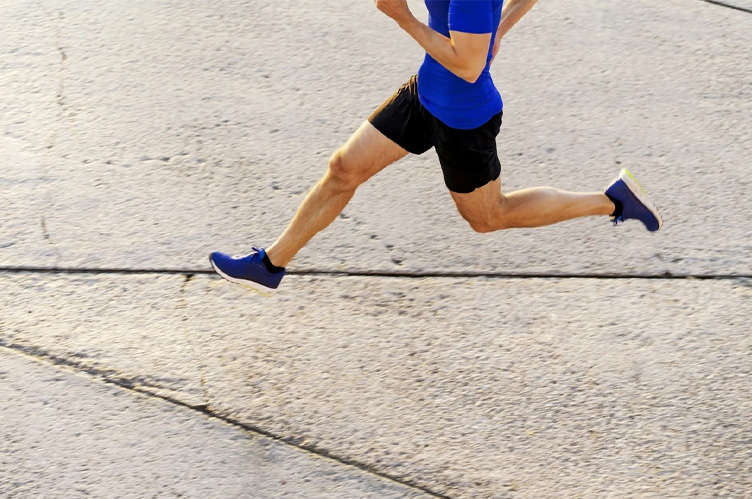
 ط§ع¯ط± ط´غŒظ† ط§ط³ظ¾ظ„غŒظ†طھ ط¨ظ‡ ط±ظˆط´â€Œظ‡ط§غŒ ط¯ط±ظ…ط§ظ†غŒ ط±ط§غŒط¬ ظ¾ط§ط³ط® ظ†ظ…غŒâ€Œط¯ظ‡ط¯ غŒط§ ط§ع¯ط± ظ‡ط± غŒع© ط§ط² ط¹ظ„ط§ط¦ظ… ط²غŒط± ط±ط§ طھط¬ط±ط¨ظ‡ ظ…غŒâ€Œع©ظ†غŒط¯ ط¨ظ‡ ظ¾ط²ط´ع© ظ…ط±ط§ط¬ط¹ظ‡ ع©ظ†غŒط¯:
ط§ع¯ط± ط´غŒظ† ط§ط³ظ¾ظ„غŒظ†طھ ط¨ظ‡ ط±ظˆط´â€Œظ‡ط§غŒ ط¯ط±ظ…ط§ظ†غŒ ط±ط§غŒط¬ ظ¾ط§ط³ط® ظ†ظ…غŒâ€Œط¯ظ‡ط¯ غŒط§ ط§ع¯ط± ظ‡ط± غŒع© ط§ط² ط¹ظ„ط§ط¦ظ… ط²غŒط± ط±ط§ طھط¬ط±ط¨ظ‡ ظ…غŒâ€Œع©ظ†غŒط¯ ط¨ظ‡ ظ¾ط²ط´ع© ظ…ط±ط§ط¬ط¹ظ‡ ع©ظ†غŒط¯: ظ¾ط²ط´ع© ط§ط؛ظ„ط¨ ط¨ظ‡ ط´ظ…ط§ طھظˆطµغŒظ‡ ظ…غŒ ع©ظ†ط¯ ع©ظ‡ ظ…ظˆط§ط±ط¯ ط²غŒط± ط±ط§ ط§ظ†ط¬ط§ظ… ط¯ظ‡غŒط¯:
ظ¾ط²ط´ع© ط§ط؛ظ„ط¨ ط¨ظ‡ ط´ظ…ط§ طھظˆطµغŒظ‡ ظ…غŒ ع©ظ†ط¯ ع©ظ‡ ظ…ظˆط§ط±ط¯ ط²غŒط± ط±ط§ ط§ظ†ط¬ط§ظ… ط¯ظ‡غŒط¯: ظ‚ط¨ظ„ ط§ط² ط´ط±ظˆط¹ ظ…ط¬ط¯ط¯ ظ‡ط± ظپط¹ط§ظ„غŒطھغŒ ط¨ط§ ظ¾ط²ط´ع© ط®ظˆط¯ ظ…ط´ظˆط±طھ ع©ظ†غŒط¯. ع¯ط±ظ… ع©ط±ط¯ظ† ظ‚ط¨ظ„ ط§ط² ظˆط±ط²ط´ ظ†غŒط² ط±ط§ظ‡ ط®ظˆط¨غŒ ط¨ط±ط§غŒ ط§ط·ظ…غŒظ†ط§ظ† ط§ط² ط¹ط¯ظ… ط¯ط§ط´طھظ† ط¯ط±ط¯ ط¯ط± ظ¾ط§ظ‡ط§ط³طھ.
ظ‚ط¨ظ„ ط§ط² ط´ط±ظˆط¹ ظ…ط¬ط¯ط¯ ظ‡ط± ظپط¹ط§ظ„غŒطھغŒ ط¨ط§ ظ¾ط²ط´ع© ط®ظˆط¯ ظ…ط´ظˆط±طھ ع©ظ†غŒط¯. ع¯ط±ظ… ع©ط±ط¯ظ† ظ‚ط¨ظ„ ط§ط² ظˆط±ط²ط´ ظ†غŒط² ط±ط§ظ‡ ط®ظˆط¨غŒ ط¨ط±ط§غŒ ط§ط·ظ…غŒظ†ط§ظ† ط§ط² ط¹ط¯ظ… ط¯ط§ط´طھظ† ط¯ط±ط¯ ط¯ط± ظ¾ط§ظ‡ط§ط³طھ.



 To directly measure oxygen consumption, you need to wear a special mask together with a machine capable of analyzing the contents of your respiratory gases.
To directly measure oxygen consumption, you need to wear a special mask together with a machine capable of analyzing the contents of your respiratory gases. VO2 Max for Men vs. Women
VO2 Max for Men vs. Women What’s a Good VO2 Max for My Age?
What’s a Good VO2 Max for My Age? What About My Weight?
What About My Weight?
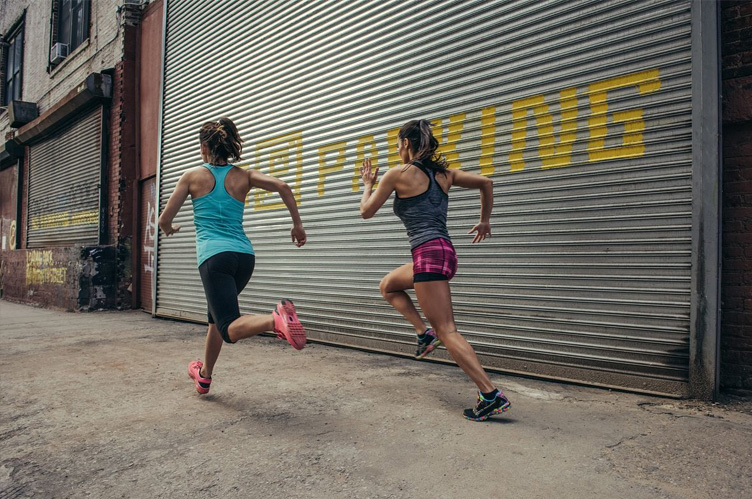




 .
.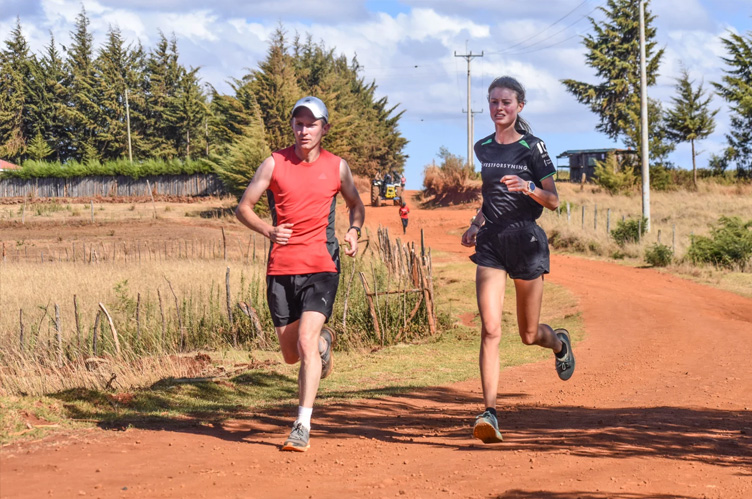

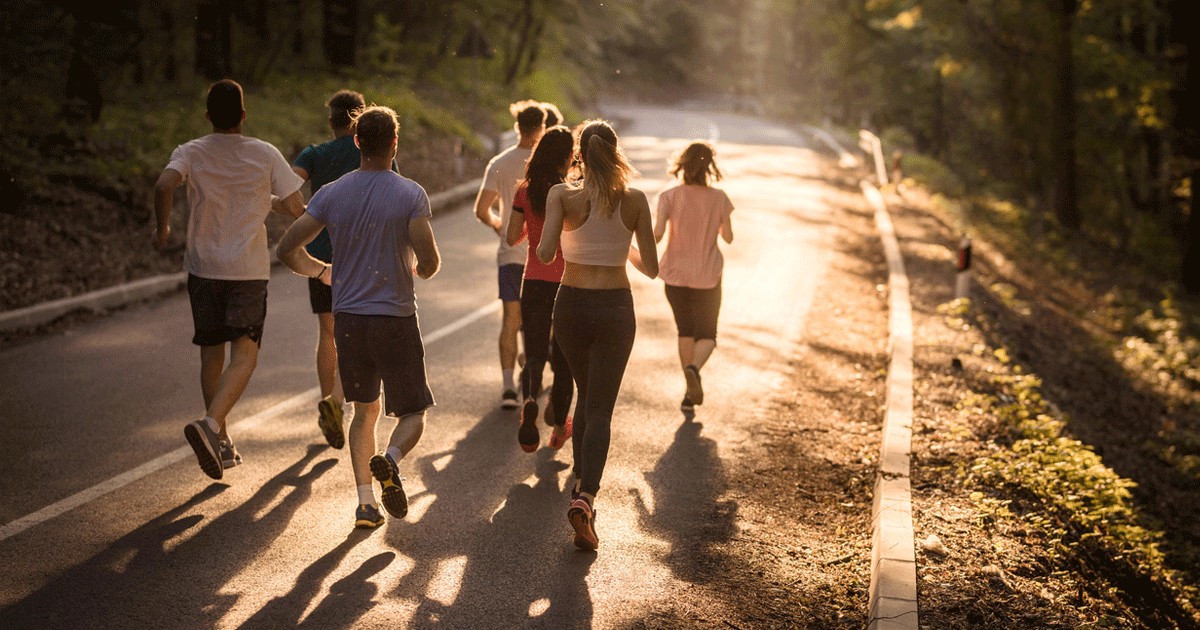





 For most of my life, I’ve been drawn to running. It is a compulsion I cannot quite explain. But after not being able to run for close to two years recently (due to running injuries), there is one thing for sure: running makes me happy.
For most of my life, I’ve been drawn to running. It is a compulsion I cannot quite explain. But after not being able to run for close to two years recently (due to running injuries), there is one thing for sure: running makes me happy. I shudder to think of the person I would be today if I hadn’t had running in my life. Running has been a source of confidence and inspiration for me since I was 6 years old. I truly believe that if everyone ran (and had a dog in their lives), the world would be a happier, more peaceful place.
I shudder to think of the person I would be today if I hadn’t had running in my life. Running has been a source of confidence and inspiration for me since I was 6 years old. I truly believe that if everyone ran (and had a dog in their lives), the world would be a happier, more peaceful place. Yes, running makes you happy because it does release chemicals within the body that improve mood and outlook, and give people a sense of productivity and a boost in self-esteem.
Yes, running makes you happy because it does release chemicals within the body that improve mood and outlook, and give people a sense of productivity and a boost in self-esteem. A “runner’s high†is a neurological reward following moderate to intense exercise perhaps with the purpose of encouraging us to continue exercising. It is characterized by a short yet deeply euphoric state full of joy and calm.
A “runner’s high†is a neurological reward following moderate to intense exercise perhaps with the purpose of encouraging us to continue exercising. It is characterized by a short yet deeply euphoric state full of joy and calm. No, a runner’s high is mostly caused by the increase in endocannabinoids, which are signaling molecules that help regulate processes, such as pain, memory, mood, immunity, and stress.
No, a runner’s high is mostly caused by the increase in endocannabinoids, which are signaling molecules that help regulate processes, such as pain, memory, mood, immunity, and stress. Other new research also points to the reduced level of leptin, a brain hormone that tells you when you’ve had enough to eat, as partly responsible for the runner’s high.
Other new research also points to the reduced level of leptin, a brain hormone that tells you when you’ve had enough to eat, as partly responsible for the runner’s high. Yes, running does release endorphins—though endorphins are no longer believed to be the root cause of a runner’s high.
Yes, running does release endorphins—though endorphins are no longer believed to be the root cause of a runner’s high. But wait! There’s more. In addition to releasing feel-good things in your body such as endocannabinoids, endorphins, and dopamine—running can also release something called “hope molecules.â€
But wait! There’s more. In addition to releasing feel-good things in your body such as endocannabinoids, endorphins, and dopamine—running can also release something called “hope molecules.â€ Ask any runner, and they will tell you one reason why they run is that it helps relieve stress. It is a time to clear your head, work through your thoughts, be in nature, get mood-boosting vitamin D, and oh—it releases another feel-good chemical in your body: norepinephrine,
Ask any runner, and they will tell you one reason why they run is that it helps relieve stress. It is a time to clear your head, work through your thoughts, be in nature, get mood-boosting vitamin D, and oh—it releases another feel-good chemical in your body: norepinephrine,
 Yes, running releases neurotransmitters such as dopamine, norepinephrine, and serotonin which can give you a sense of calm and wellbeing, aiding in reducing anxiety and OCD tendencies.
Yes, running releases neurotransmitters such as dopamine, norepinephrine, and serotonin which can give you a sense of calm and wellbeing, aiding in reducing anxiety and OCD tendencies.


 Watching children and teenagers speeding around the 5K of our local parkrun, I wonder how often they’re running that sort of distance and pace. This is something to be mindful of at their ages.
Watching children and teenagers speeding around the 5K of our local parkrun, I wonder how often they’re running that sort of distance and pace. This is something to be mindful of at their ages.
 Former Olympic long-distance runner turned running coach Liz Yelling, who
was coached from an early age, had mild Osgood-Schlatter. She remembers how her coach used to ask his athletes to measure their height weekly to ensure training was modified during a growth spurt.
Former Olympic long-distance runner turned running coach Liz Yelling, who
was coached from an early age, had mild Osgood-Schlatter. She remembers how her coach used to ask his athletes to measure their height weekly to ensure training was modified during a growth spurt.

 Sometimes, we’re not our offspring’s best role models. That can be a difficult pill to swallow, but they’re not mini adults and – although, aerobically, they’re capable of running further and longer – physically, they can’t do this to an extreme level without it being potentially detrimental to their musculoskeletal health over time.
Sometimes, we’re not our offspring’s best role models. That can be a difficult pill to swallow, but they’re not mini adults and – although, aerobically, they’re capable of running further and longer – physically, they can’t do this to an extreme level without it being potentially detrimental to their musculoskeletal health over time.
 Plus, the two sexes have different biological maturation ages and are different in terms of hormones and musculoskeletal structures. So it’s key to look at the individual young runner, rather than set limits or targets based on generic advice.
Plus, the two sexes have different biological maturation ages and are different in terms of hormones and musculoskeletal structures. So it’s key to look at the individual young runner, rather than set limits or targets based on generic advice. but it’s essential that, with growing bodies, they adequately fuel their runs and recovery. If too much is asked of soft tissue and bones without the essential ingredients for repair, sourced from food, bodies become fatigued and vulnerable to injuries.
but it’s essential that, with growing bodies, they adequately fuel their runs and recovery. If too much is asked of soft tissue and bones without the essential ingredients for repair, sourced from food, bodies become fatigued and vulnerable to injuries.




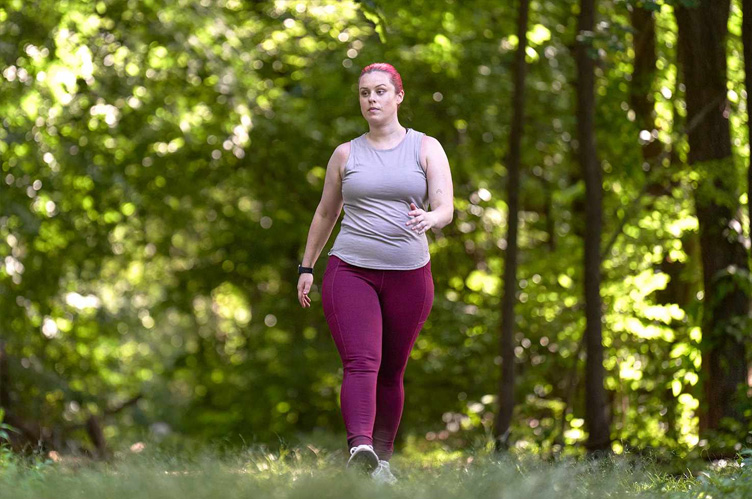
 As your 1-minute run intervals become easier, you can increase the number of your run intervals and decrease the length of your walk intervals.
As your 1-minute run intervals become easier, you can increase the number of your run intervals and decrease the length of your walk intervals.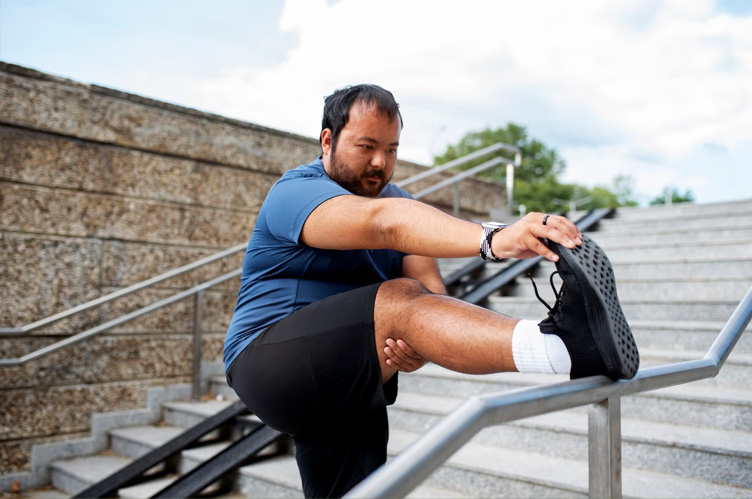

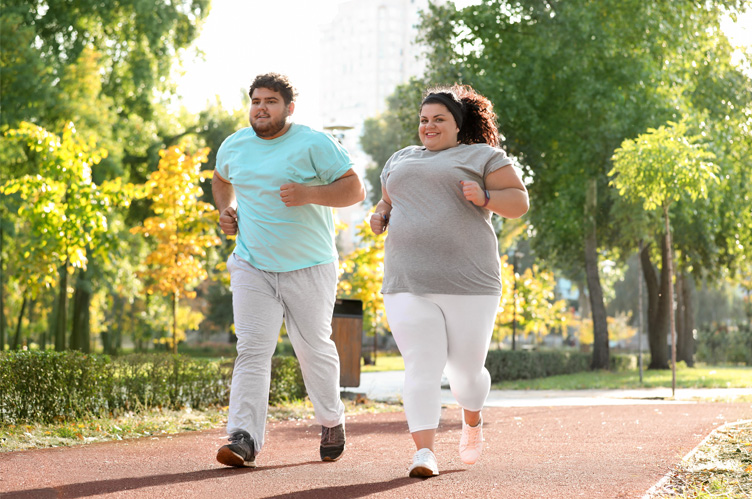



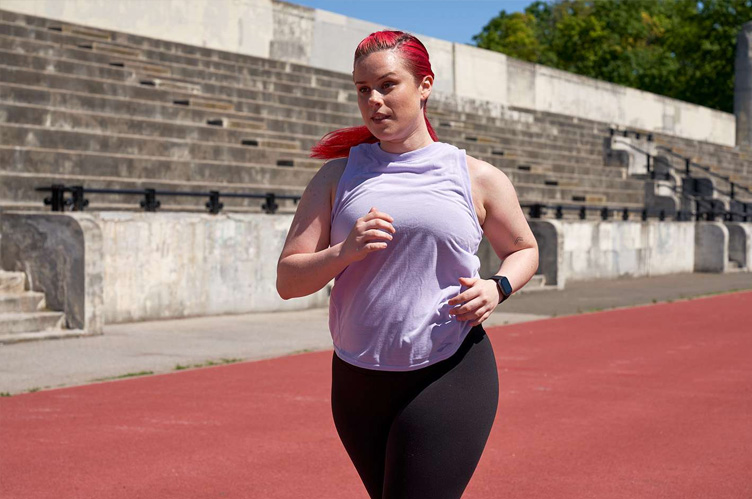 Rhythmic breathing is another approach that can help. Rather than simply trying to inhale as much air as you can with each breath, time your breathing in rhythm with your steps. Inhale for three steps, then exhale for two.
Rhythmic breathing is another approach that can help. Rather than simply trying to inhale as much air as you can with each breath, time your breathing in rhythm with your steps. Inhale for three steps, then exhale for two.
 Treatment usually involves home remedies including rest and ice compresses.
Shin splints - self-care. U.S. National Library of Medicine. U.S. Department of Health and Human Services. 2018.
Analyzing your shoes and gate may help prevent shin splints in the future, as can these tips:
Treatment usually involves home remedies including rest and ice compresses.
Shin splints - self-care. U.S. National Library of Medicine. U.S. Department of Health and Human Services. 2018.
Analyzing your shoes and gate may help prevent shin splints in the future, as can these tips: The most common remedy for runner’s knee is rest and ice. You can also help prevent pain by sticking to a training schedule that is appropriate for your fitness level.
The most common remedy for runner’s knee is rest and ice. You can also help prevent pain by sticking to a training schedule that is appropriate for your fitness level. Chafing can lead to rashes and raw skin, which is uncomfortable both during and after your run.
Chafing can lead to rashes and raw skin, which is uncomfortable both during and after your run.